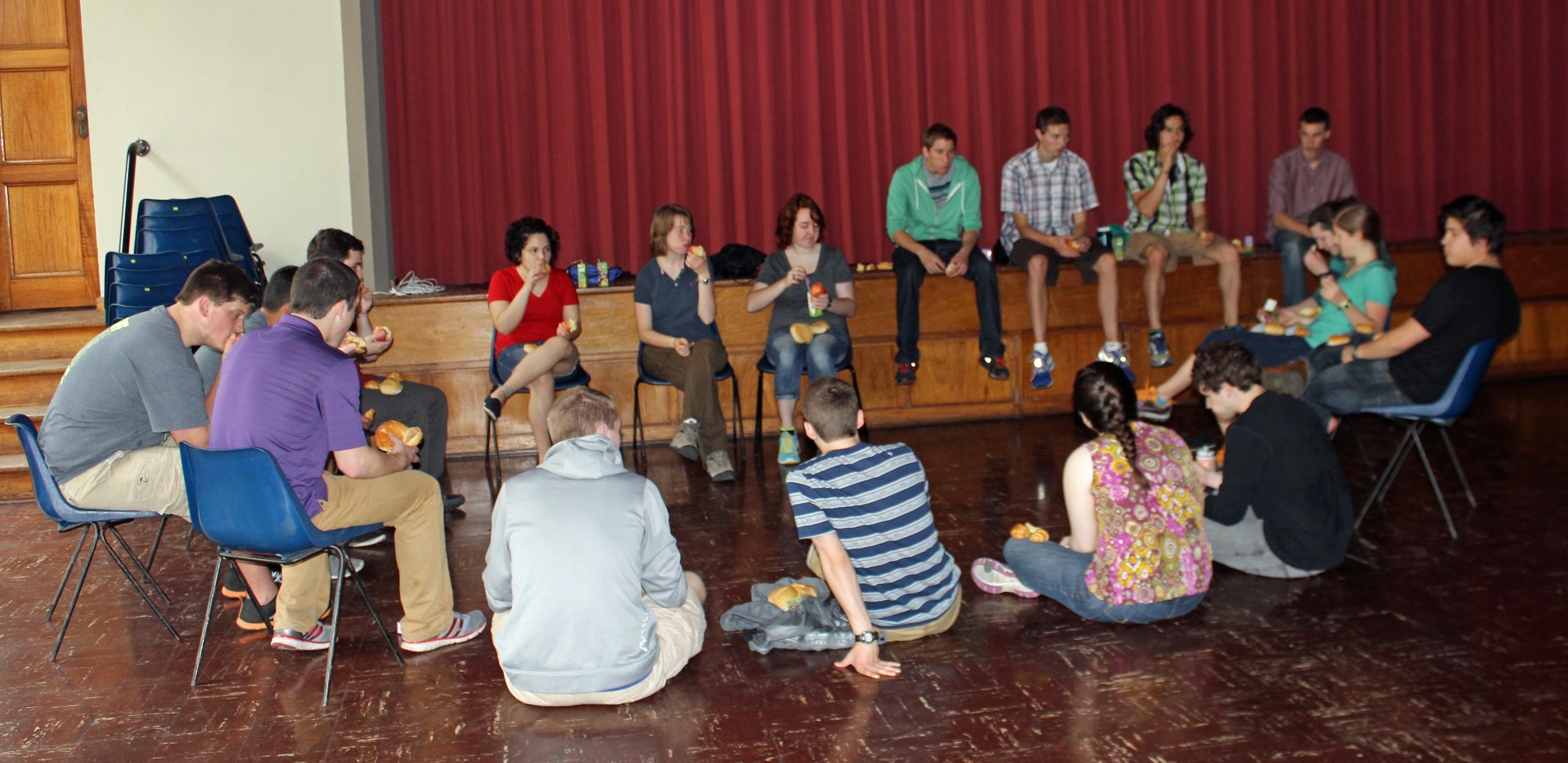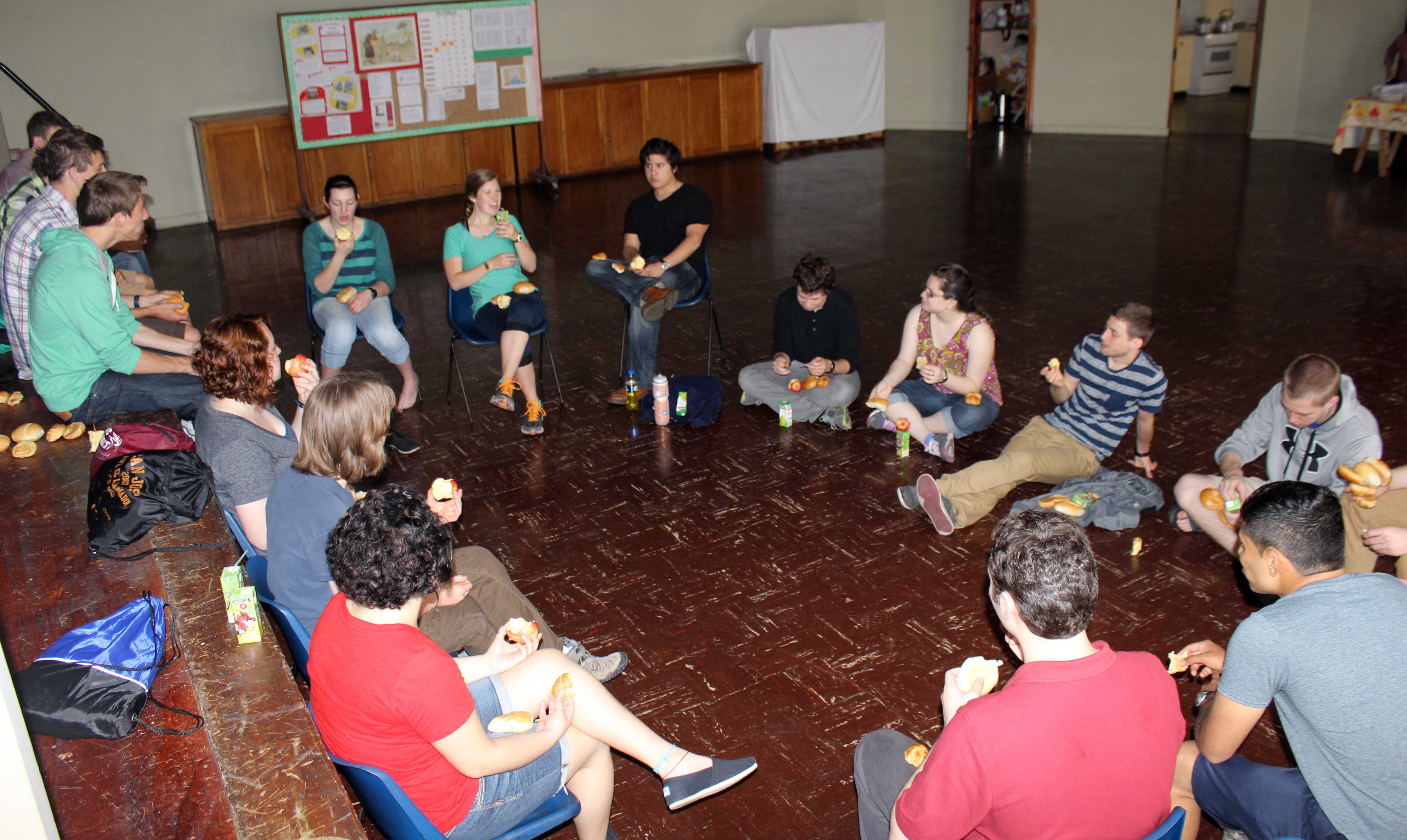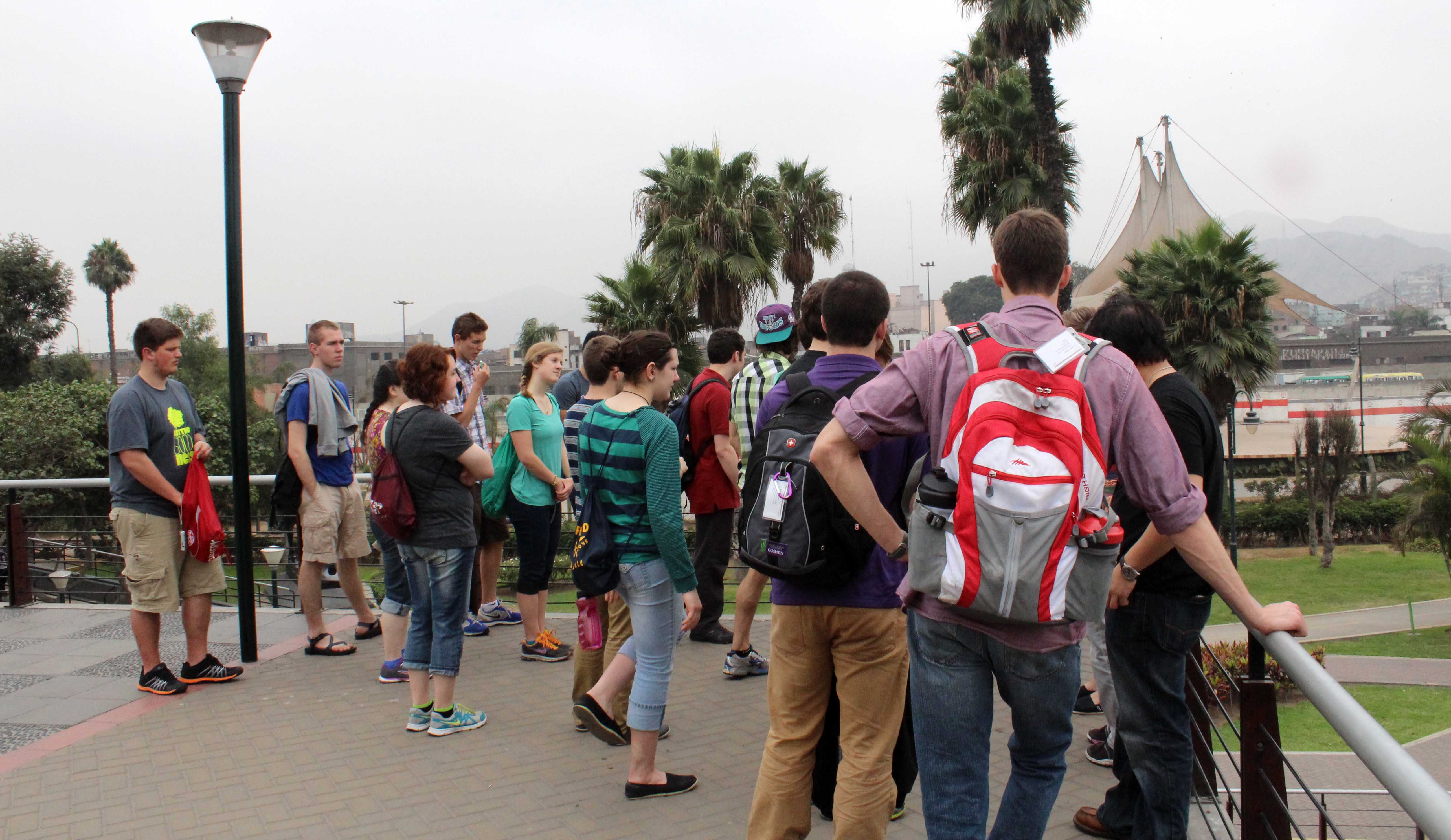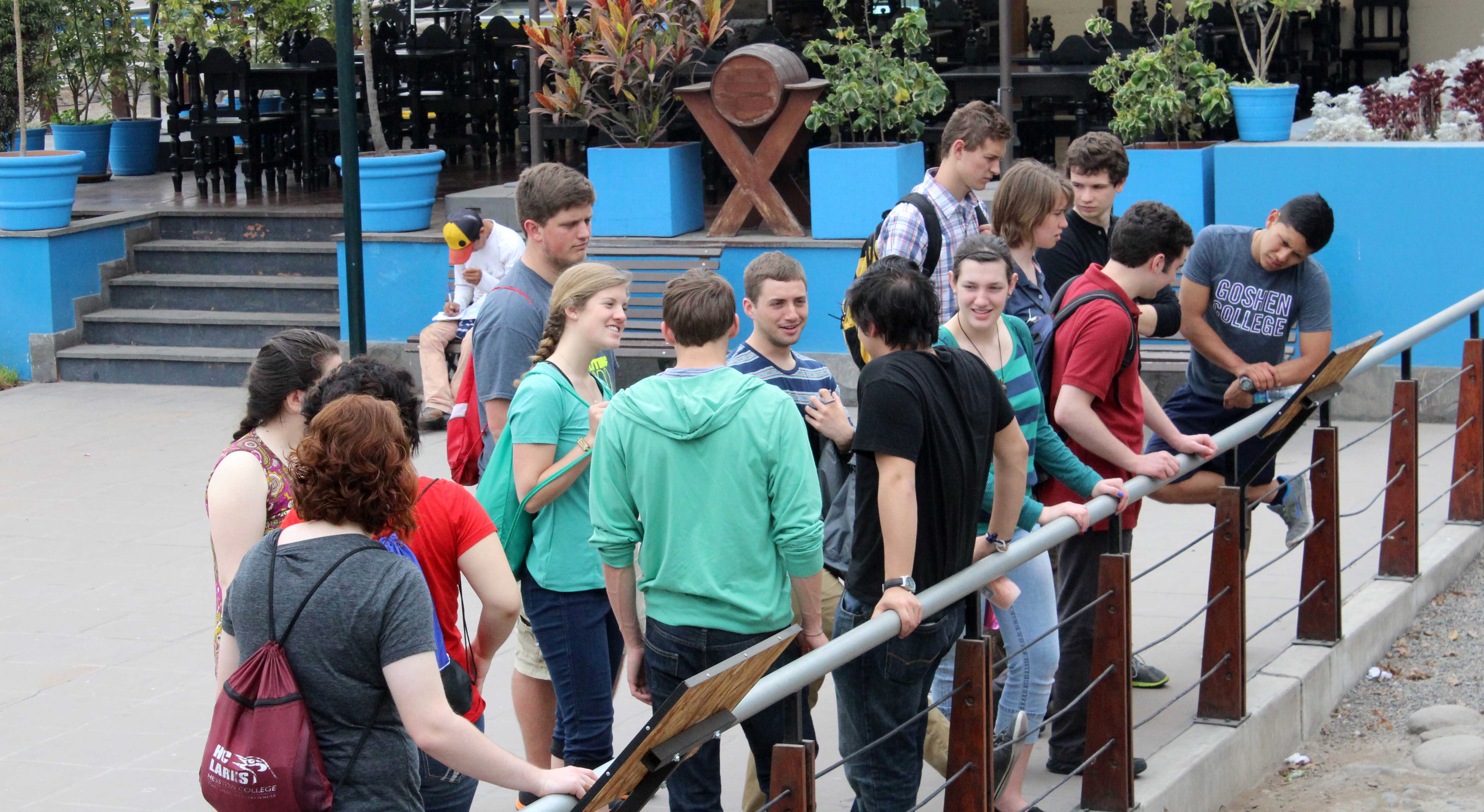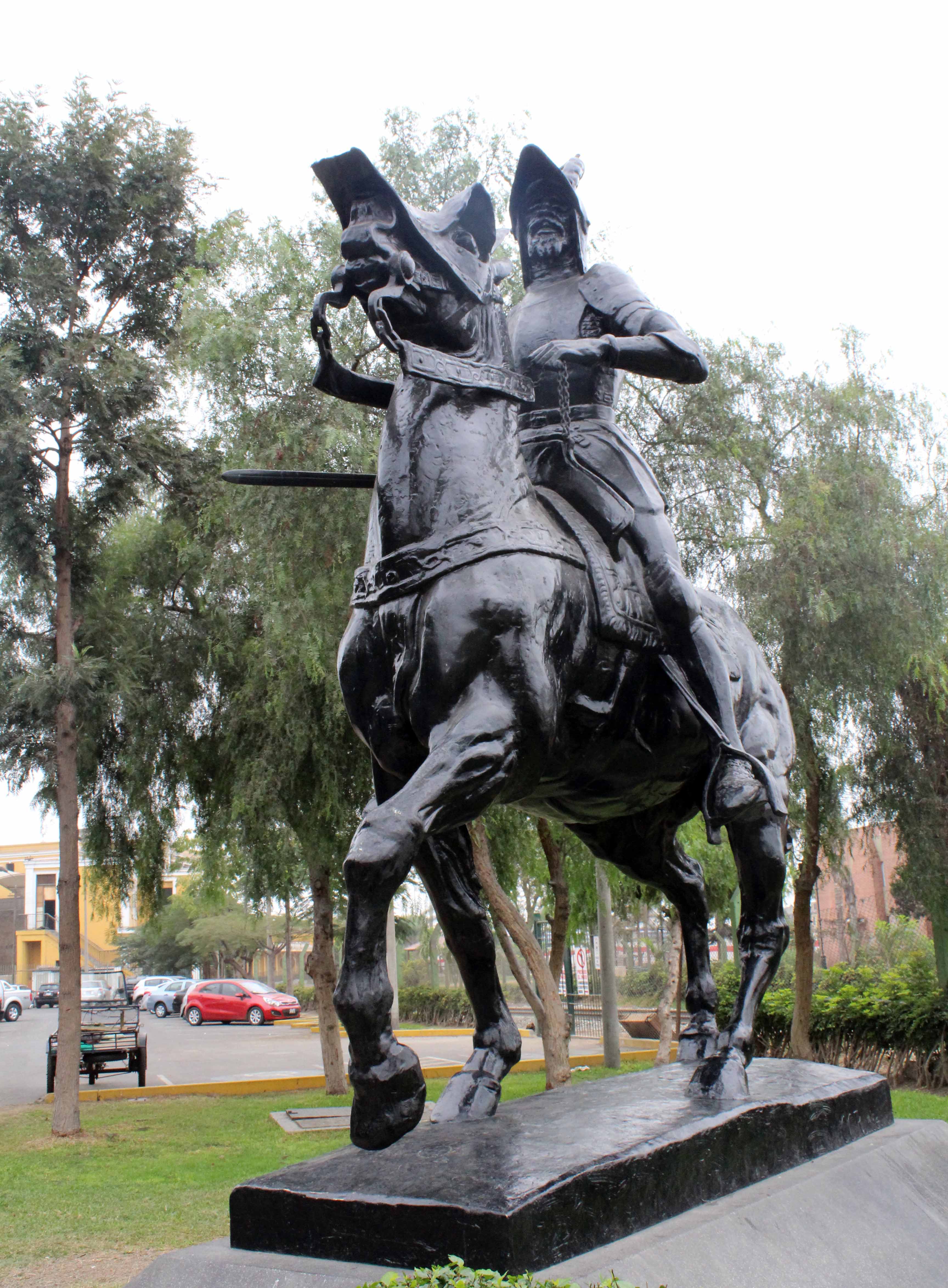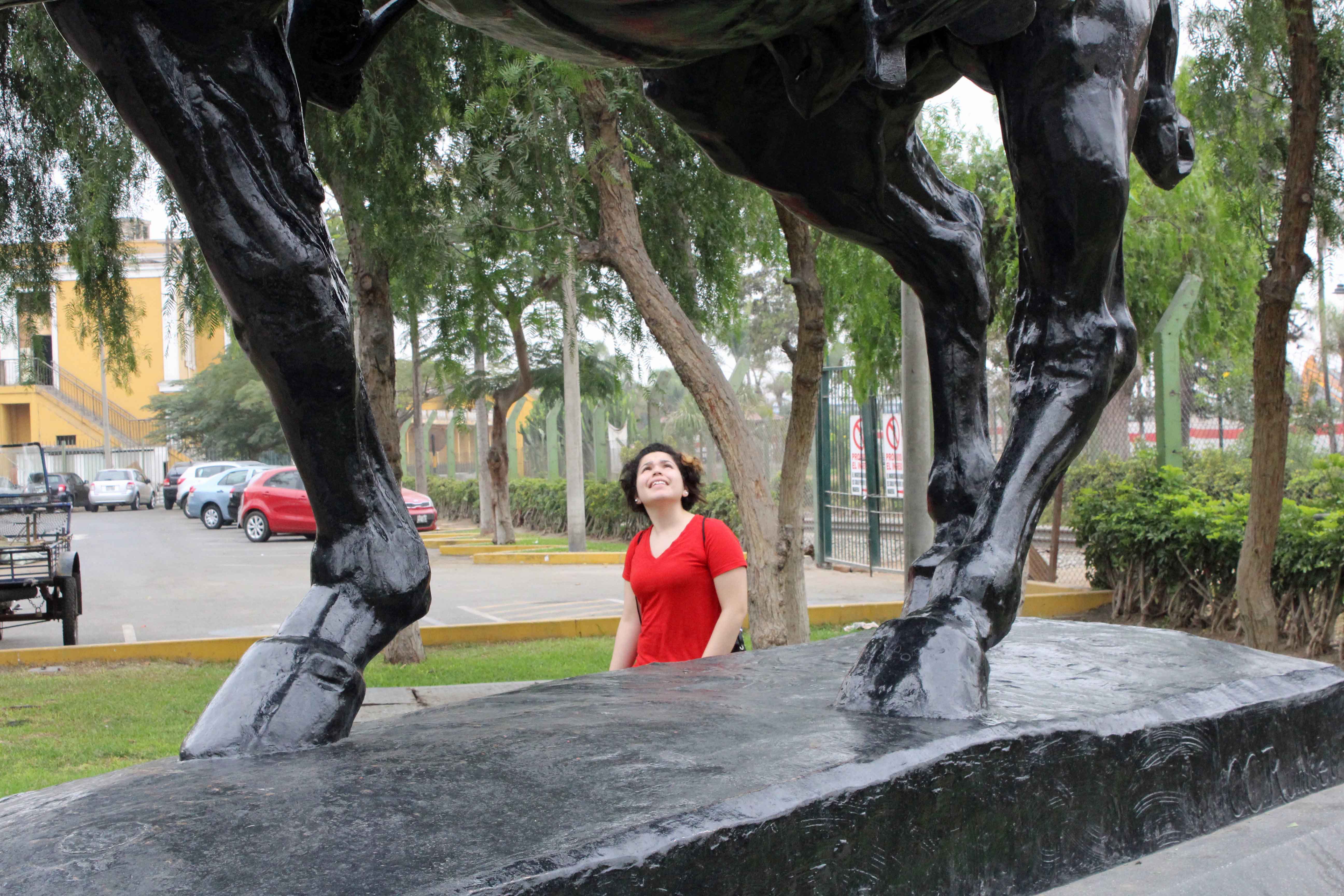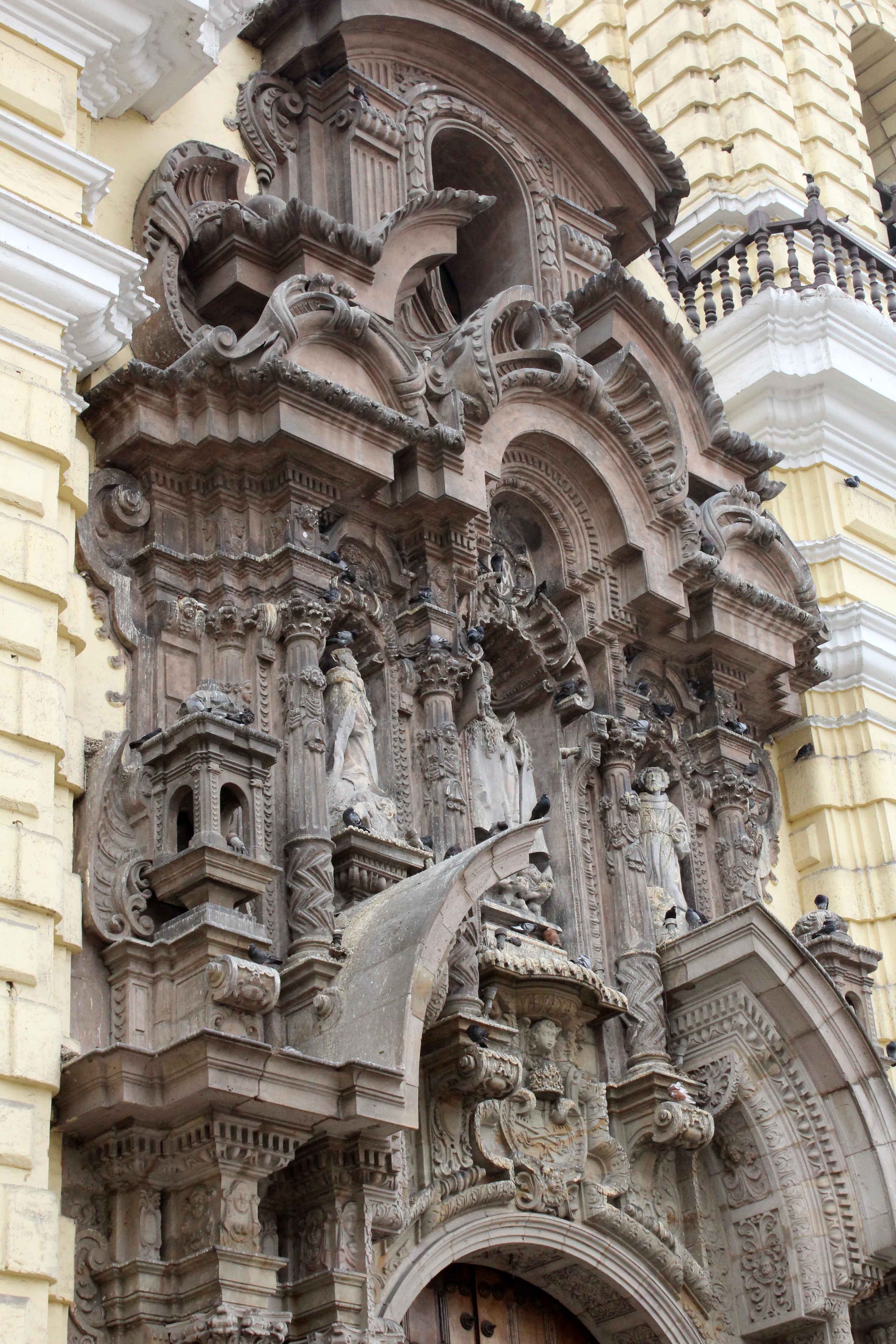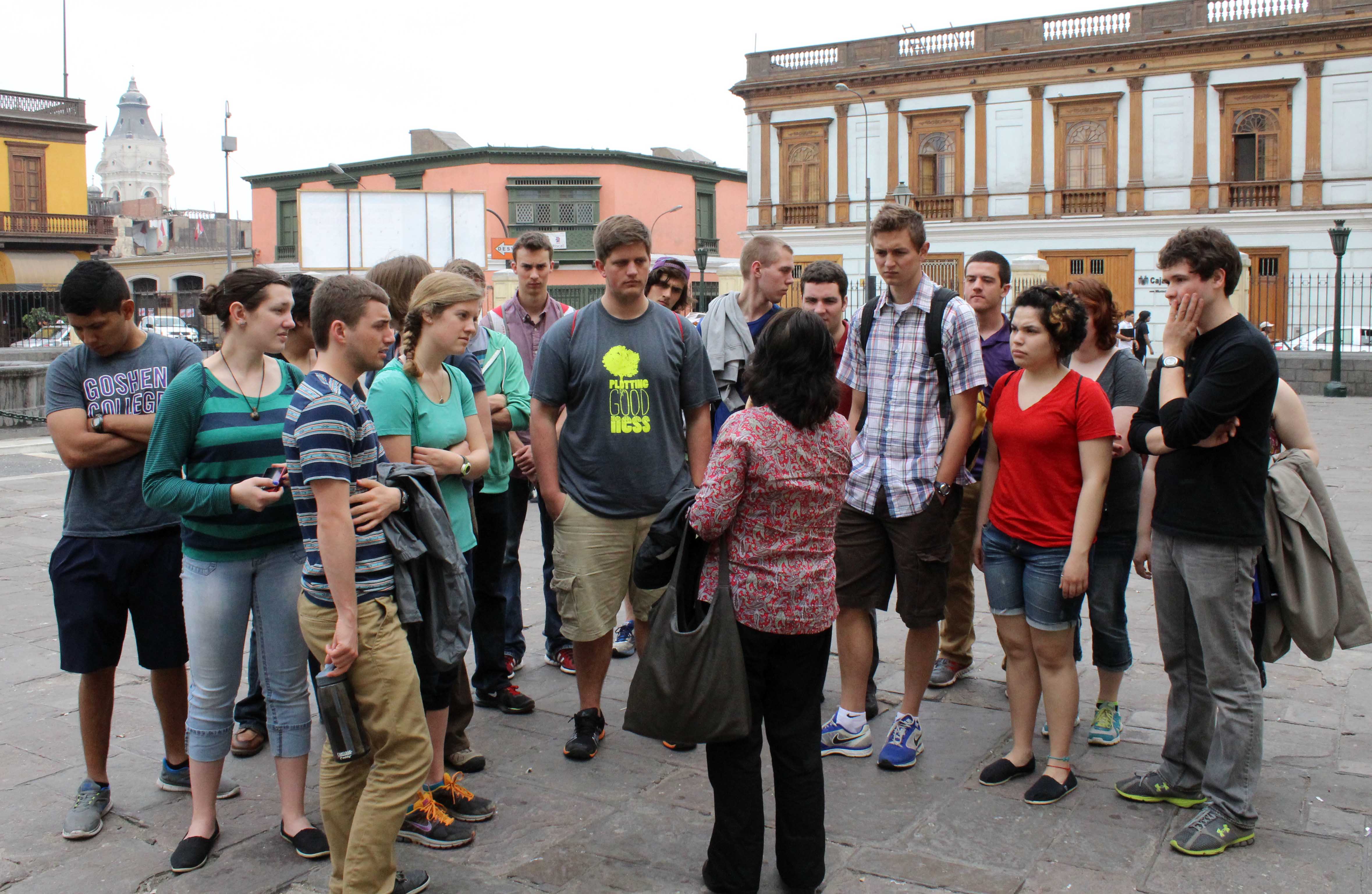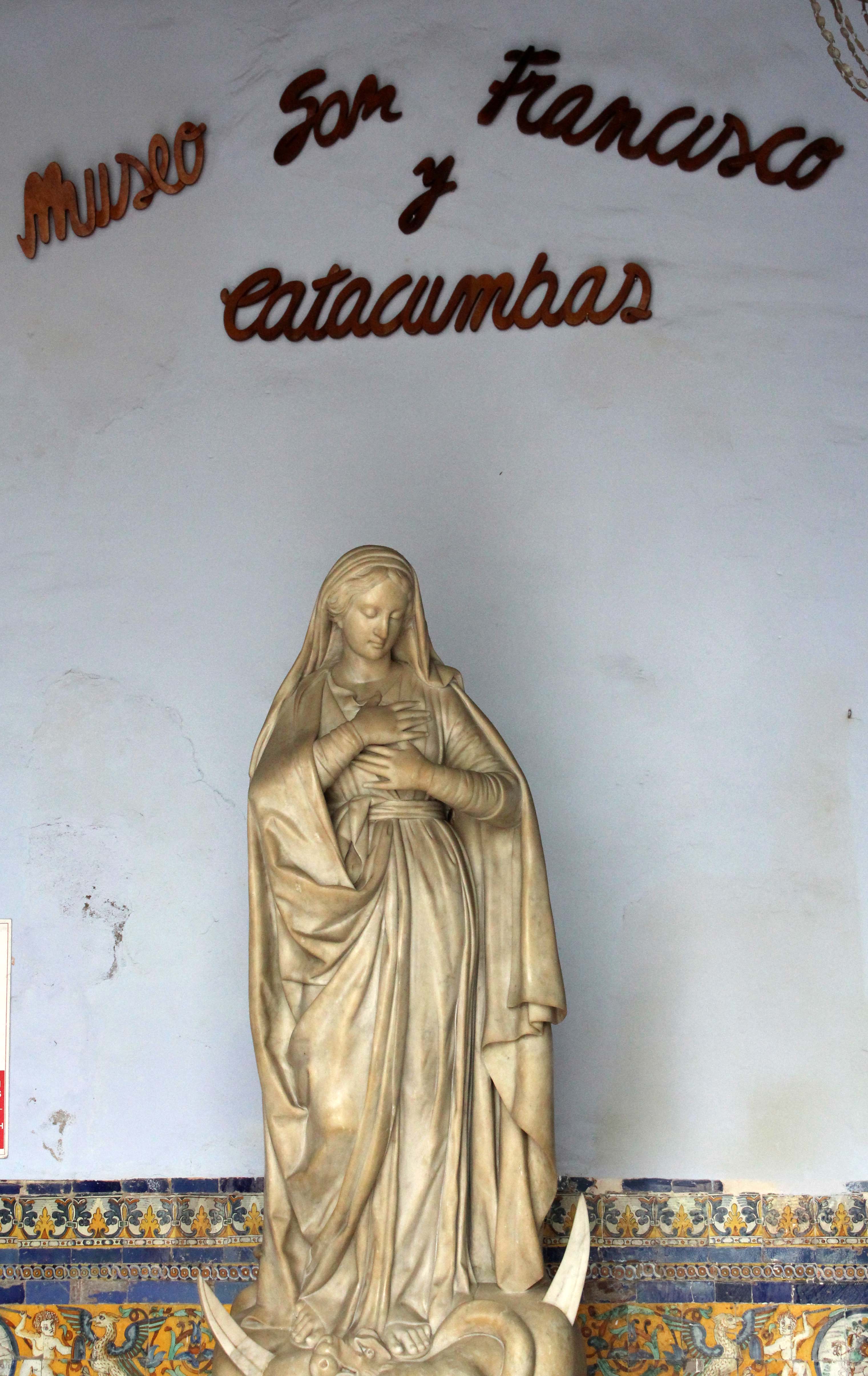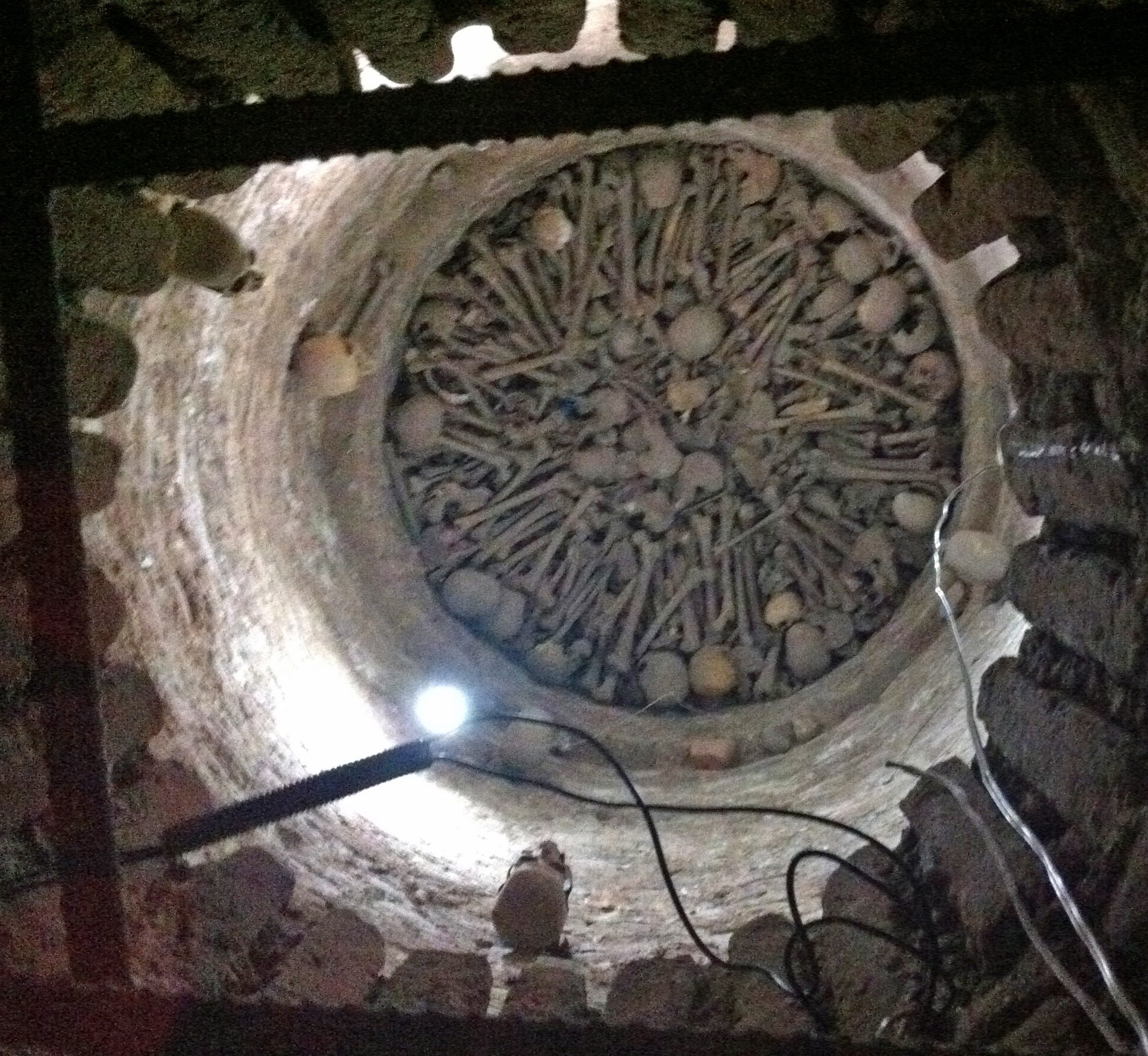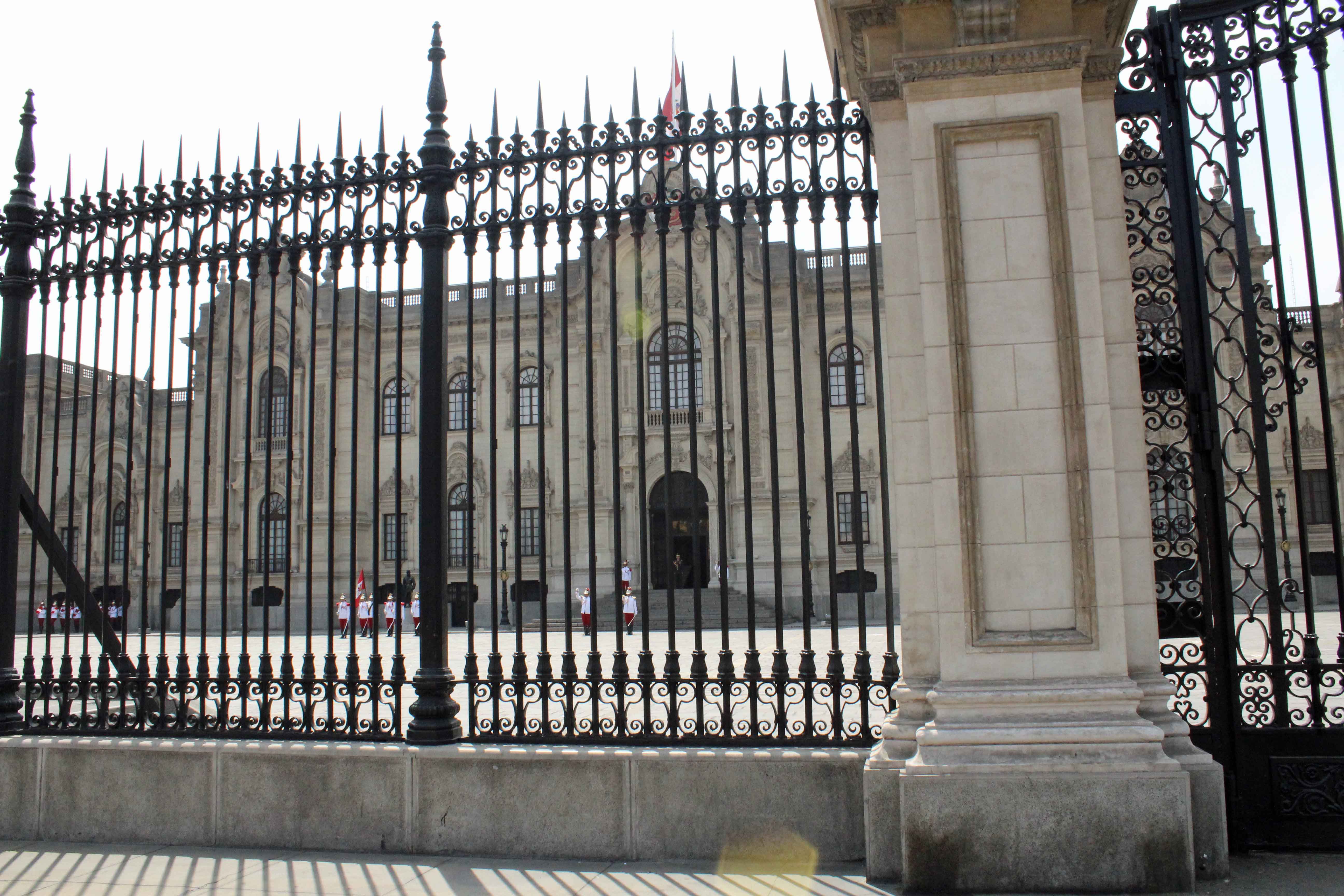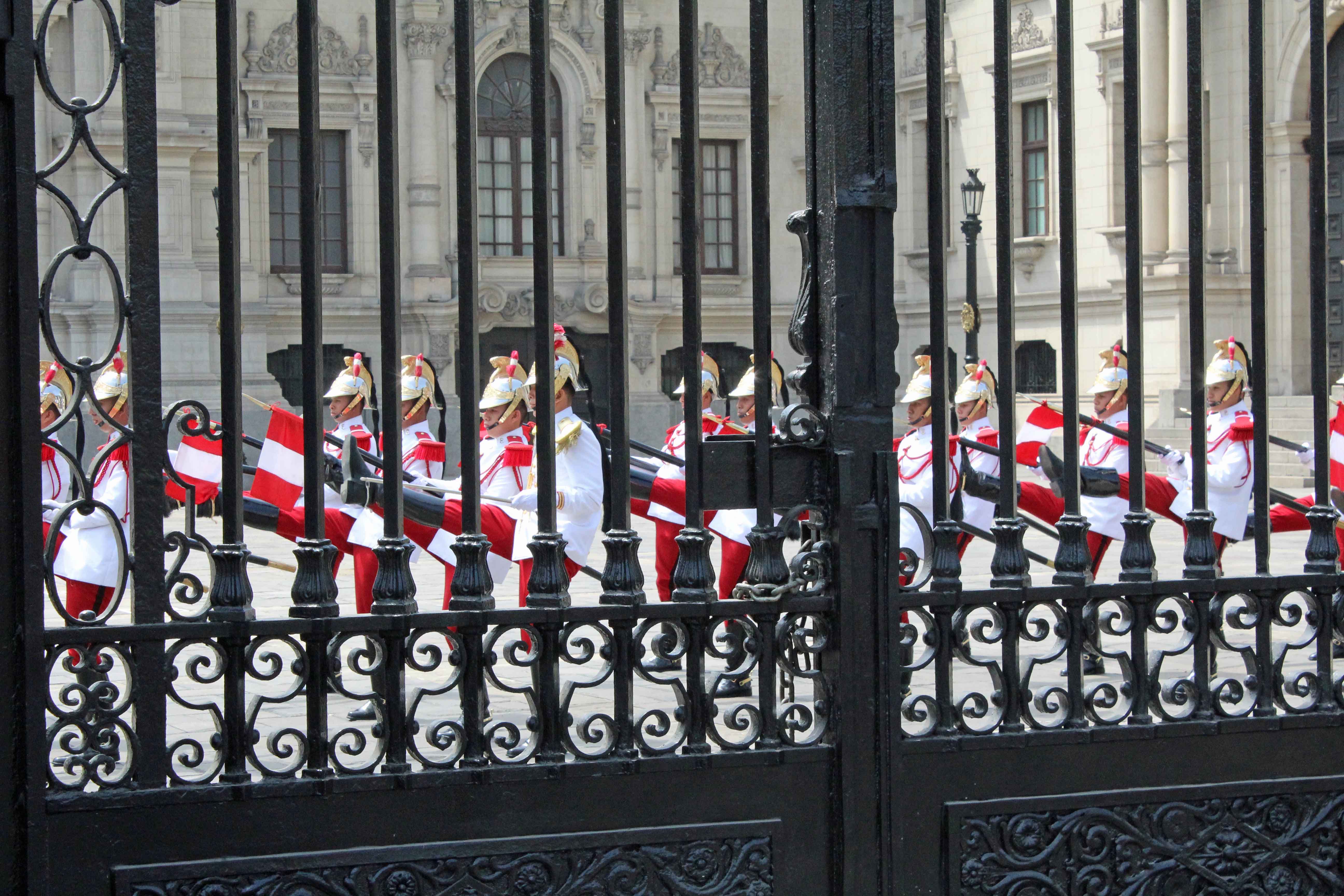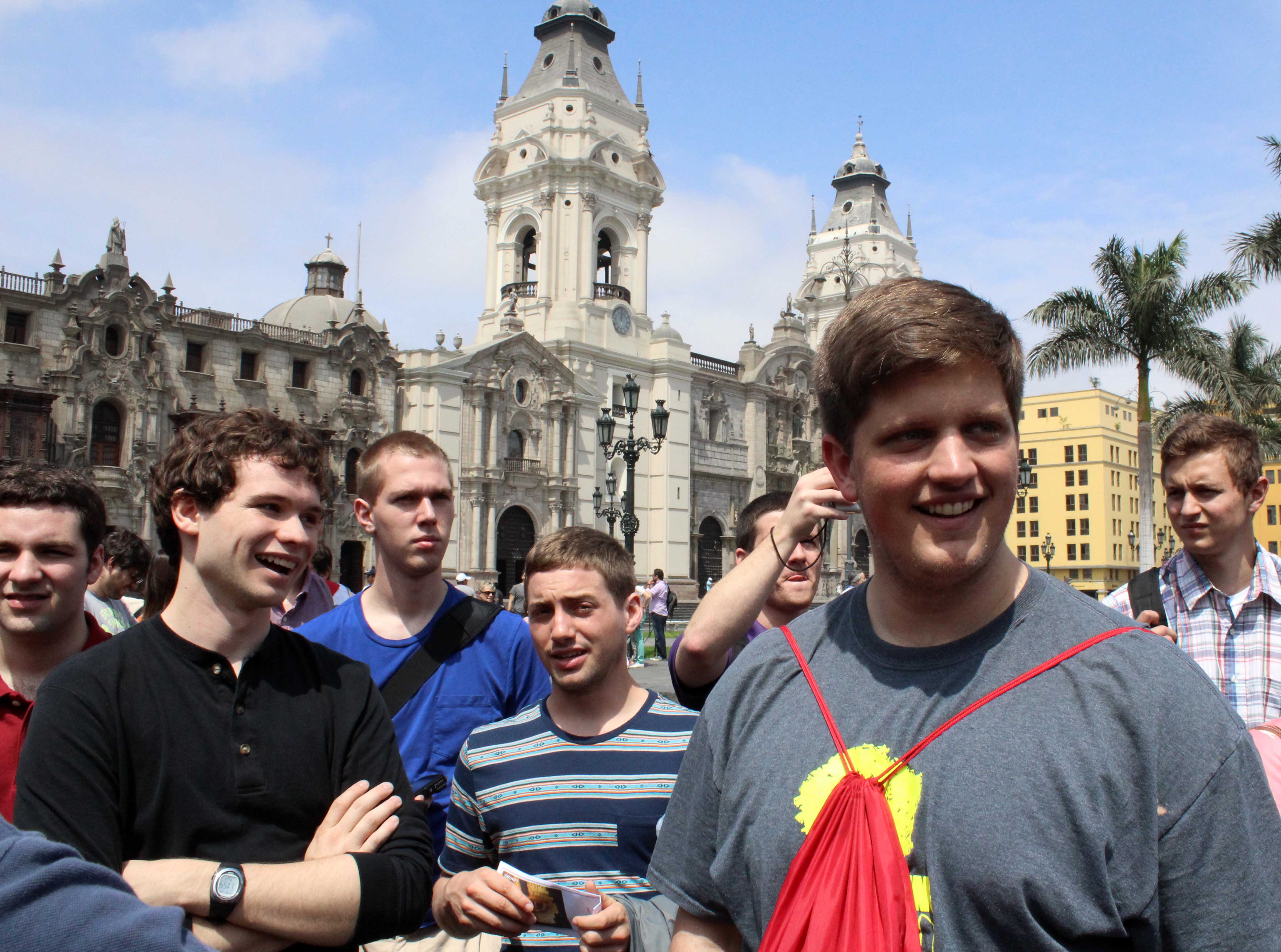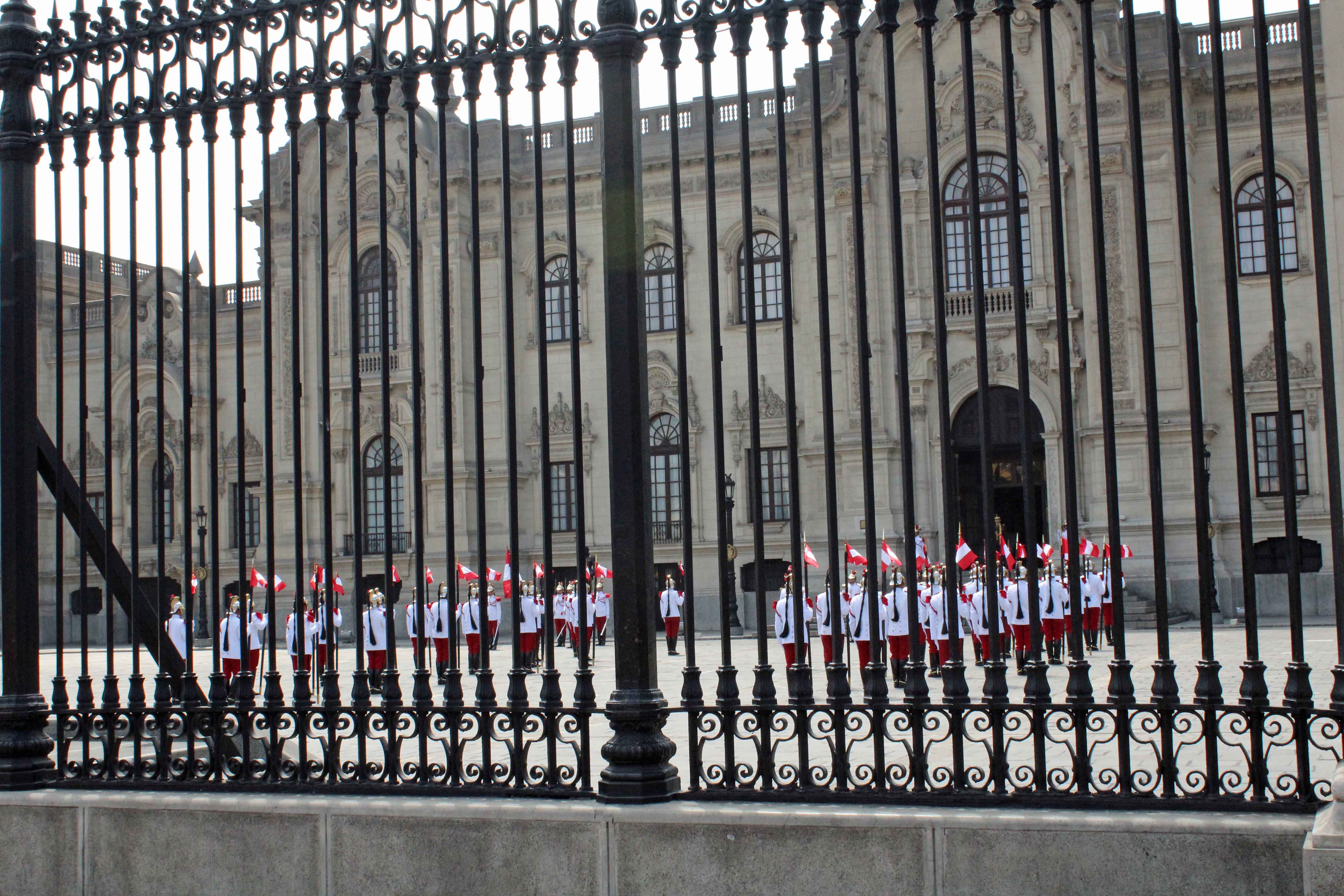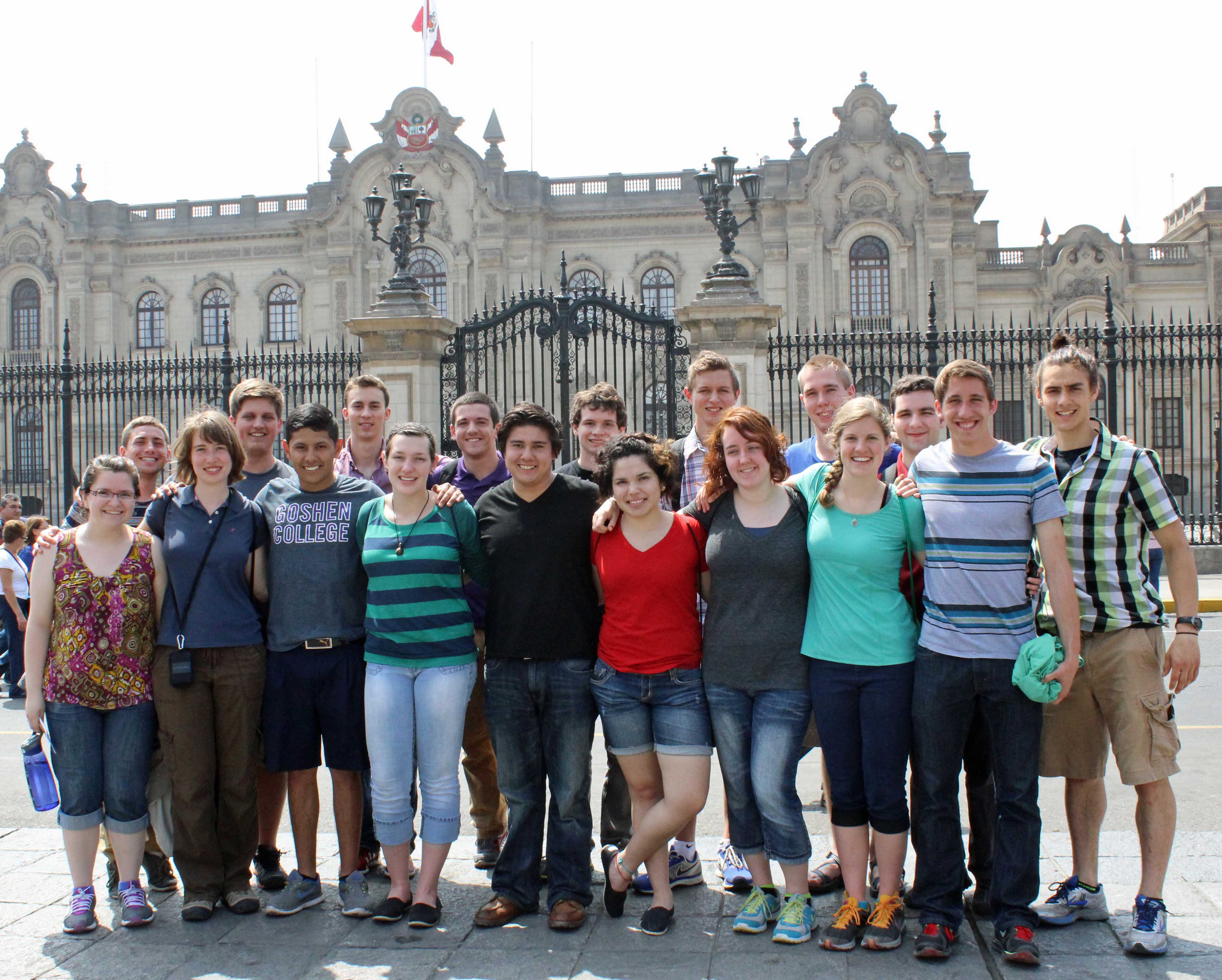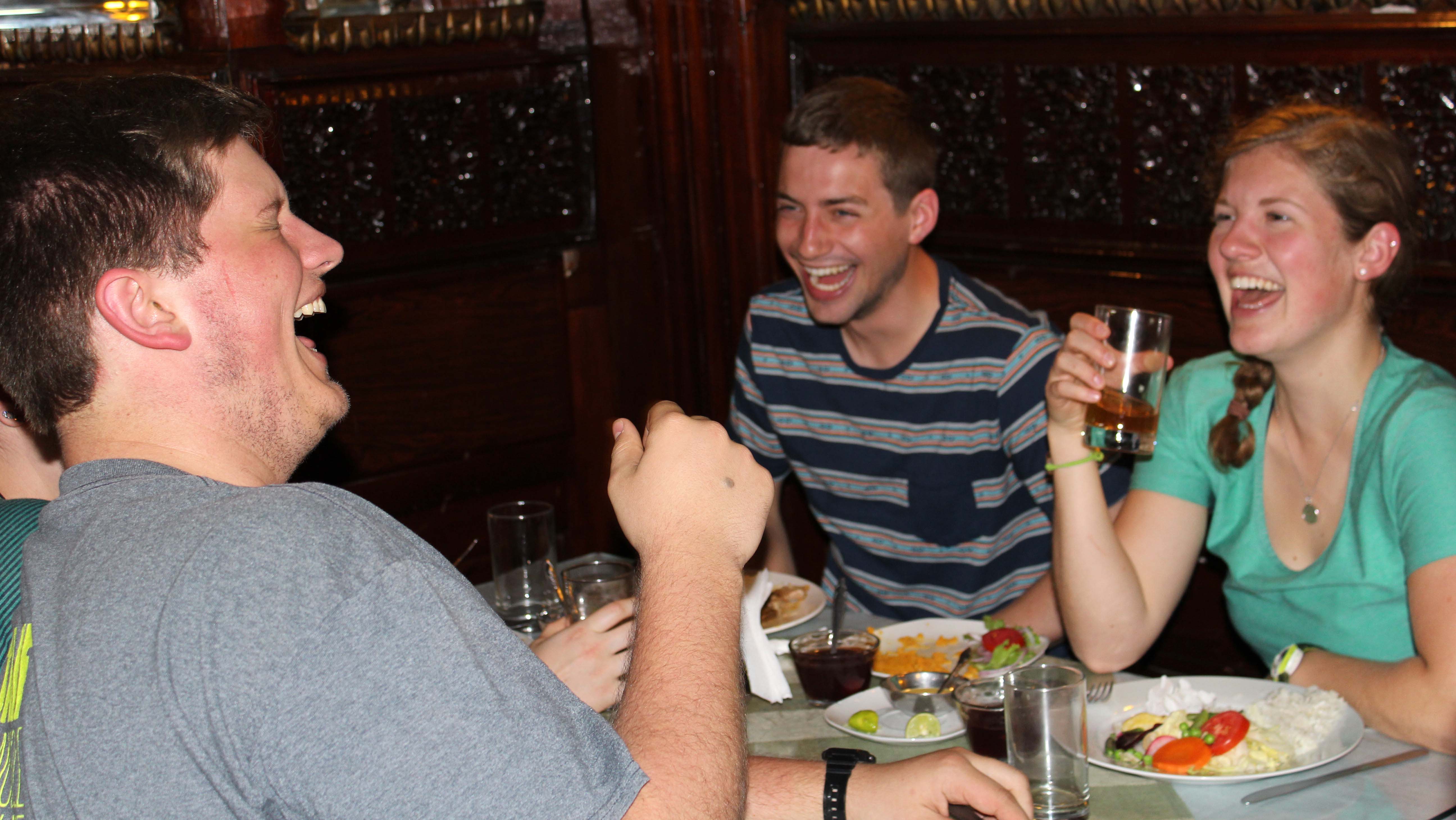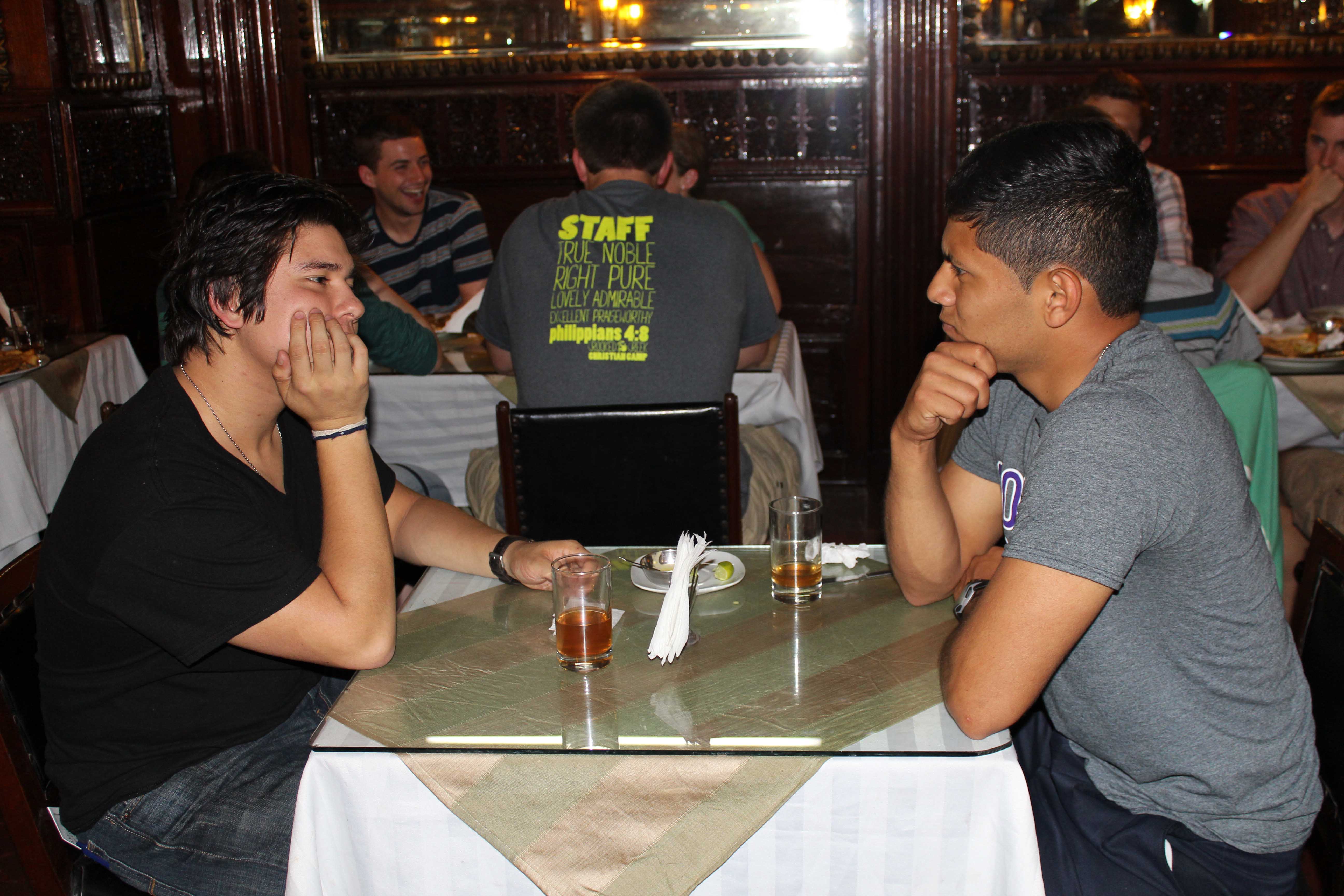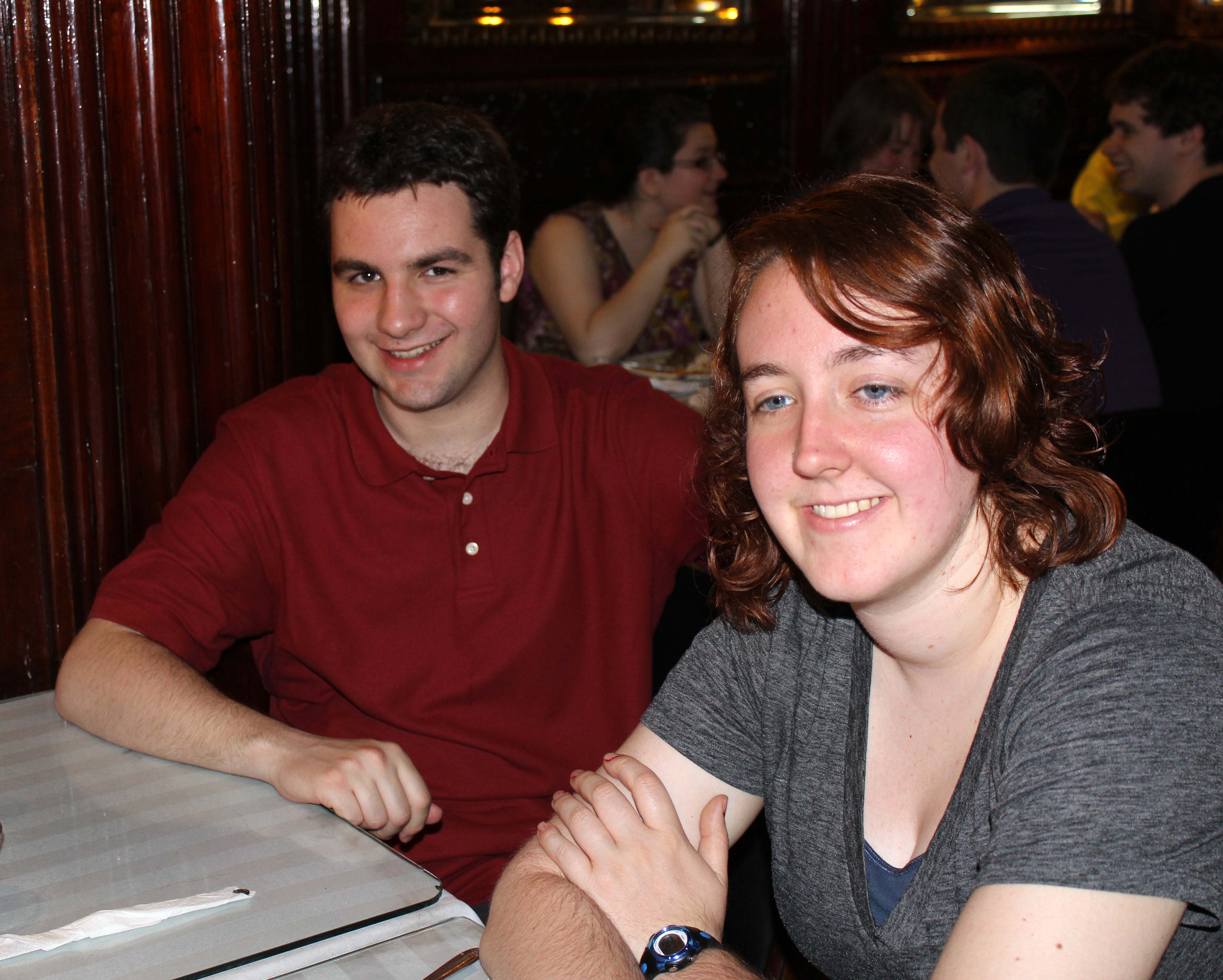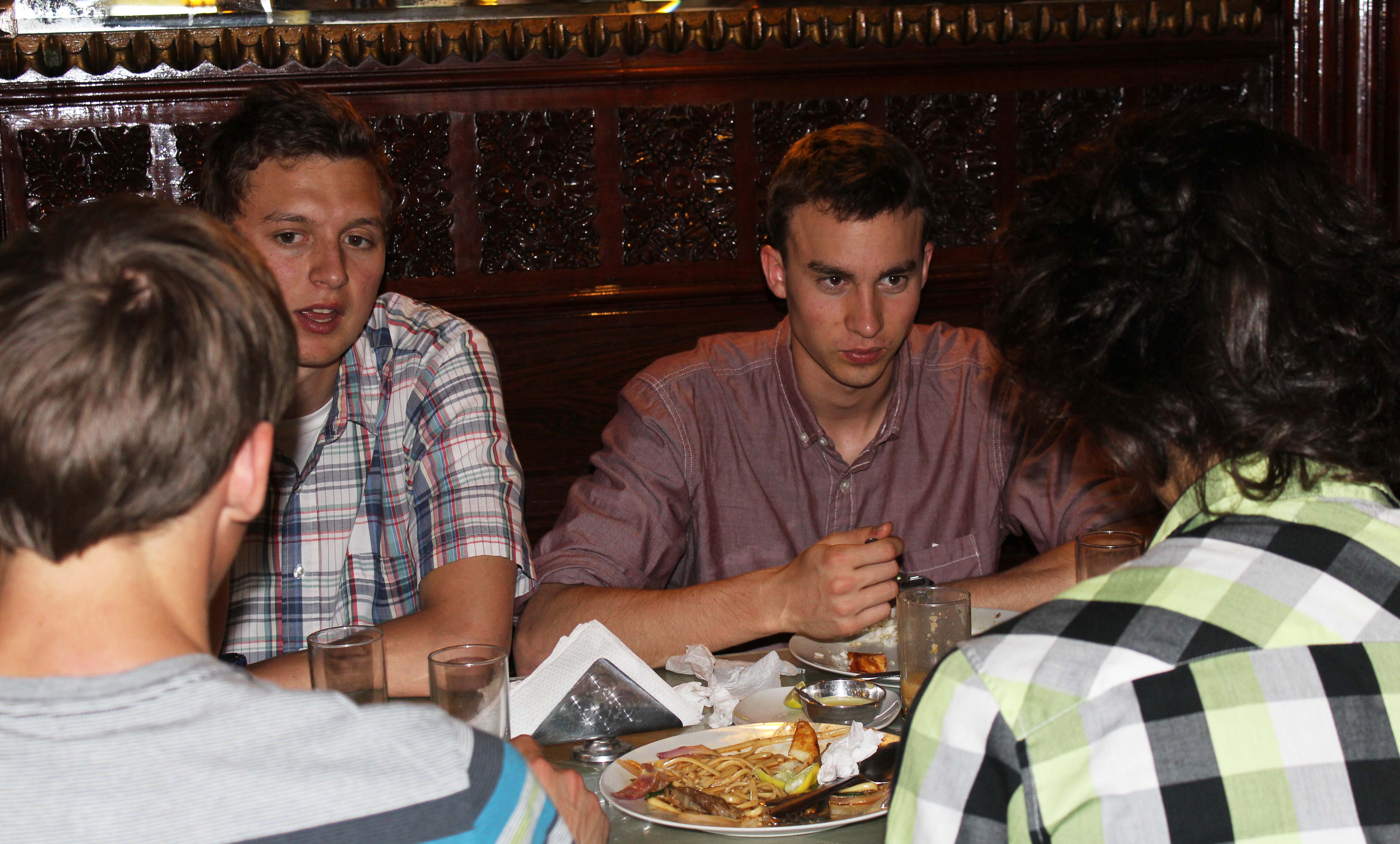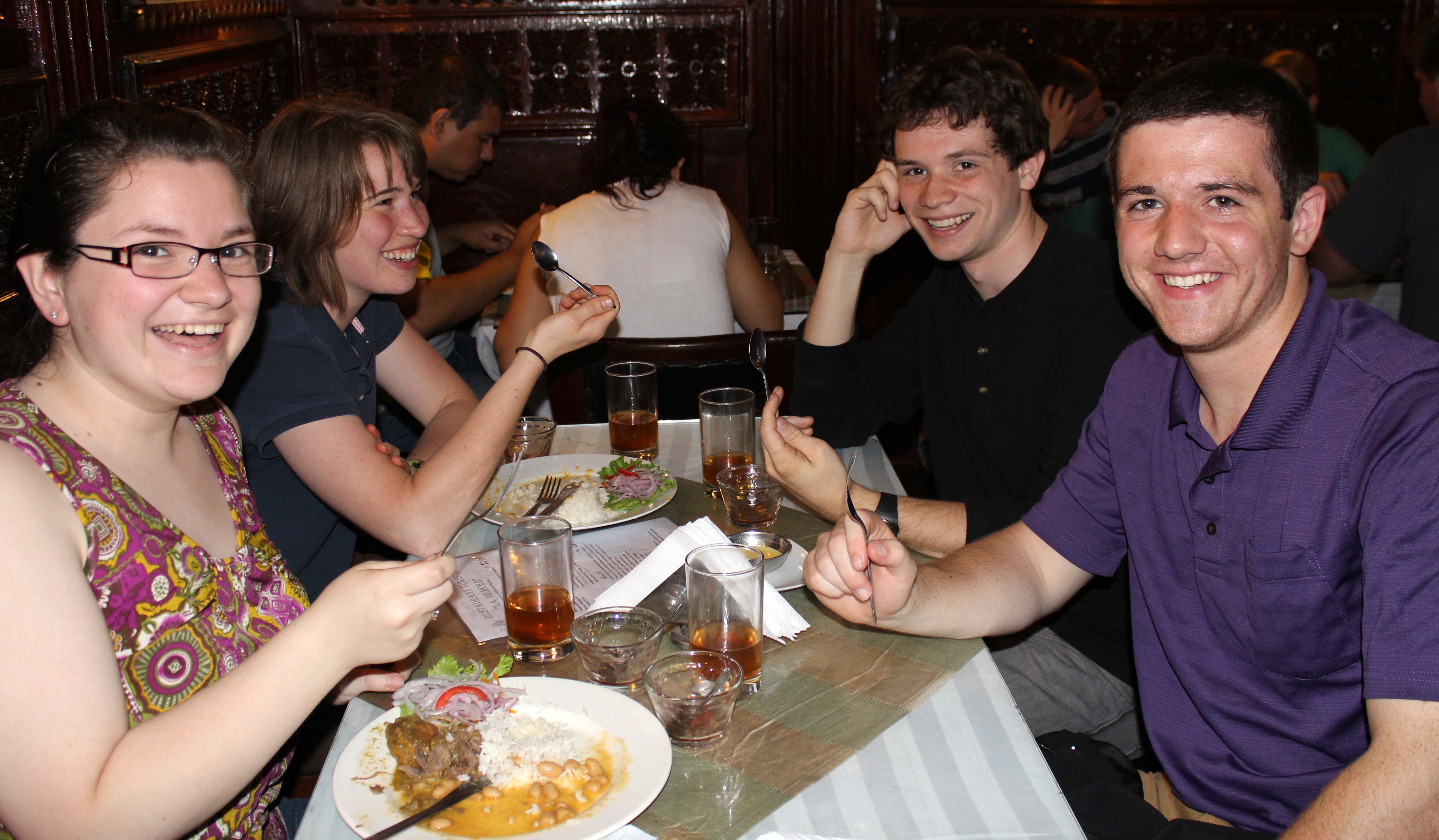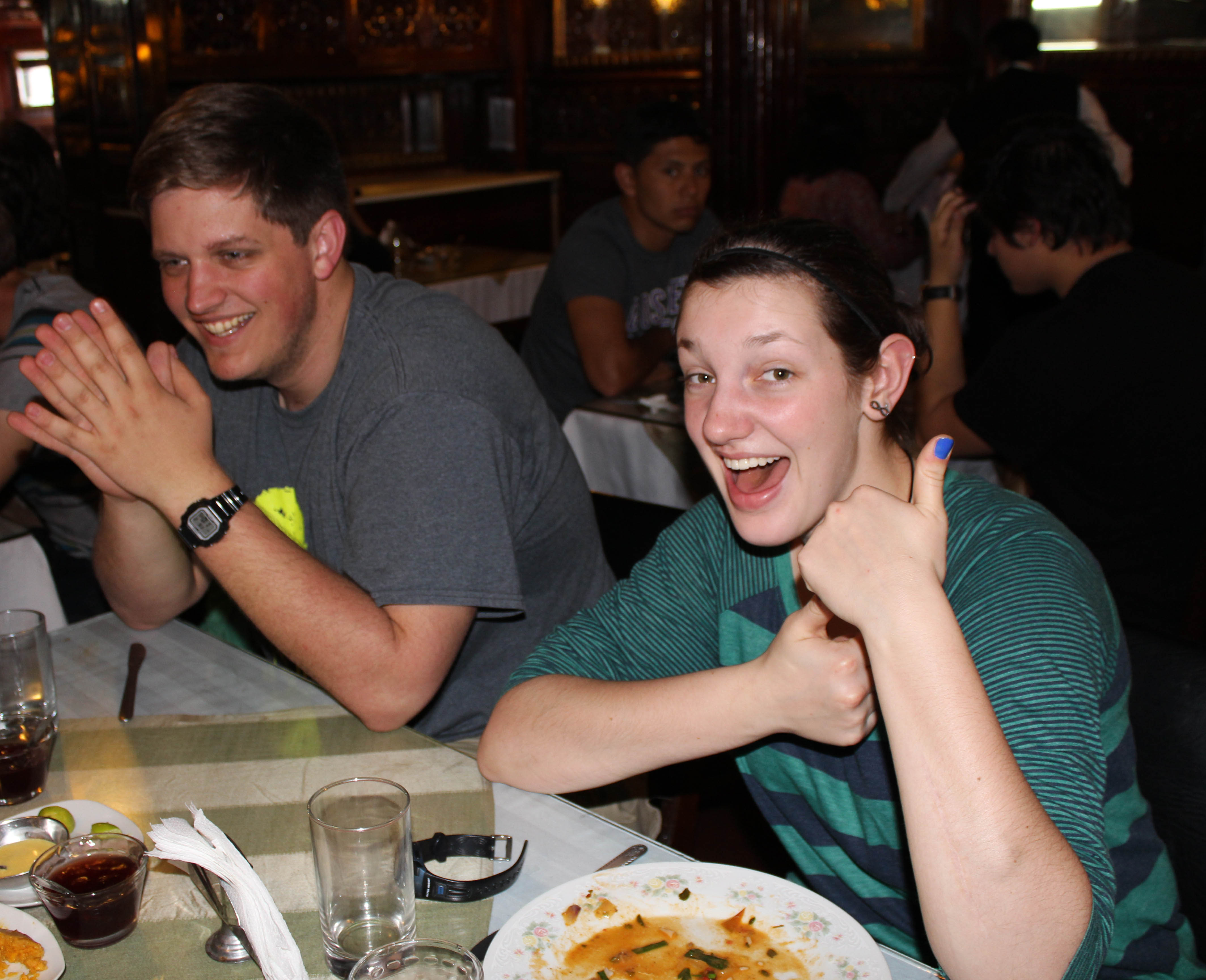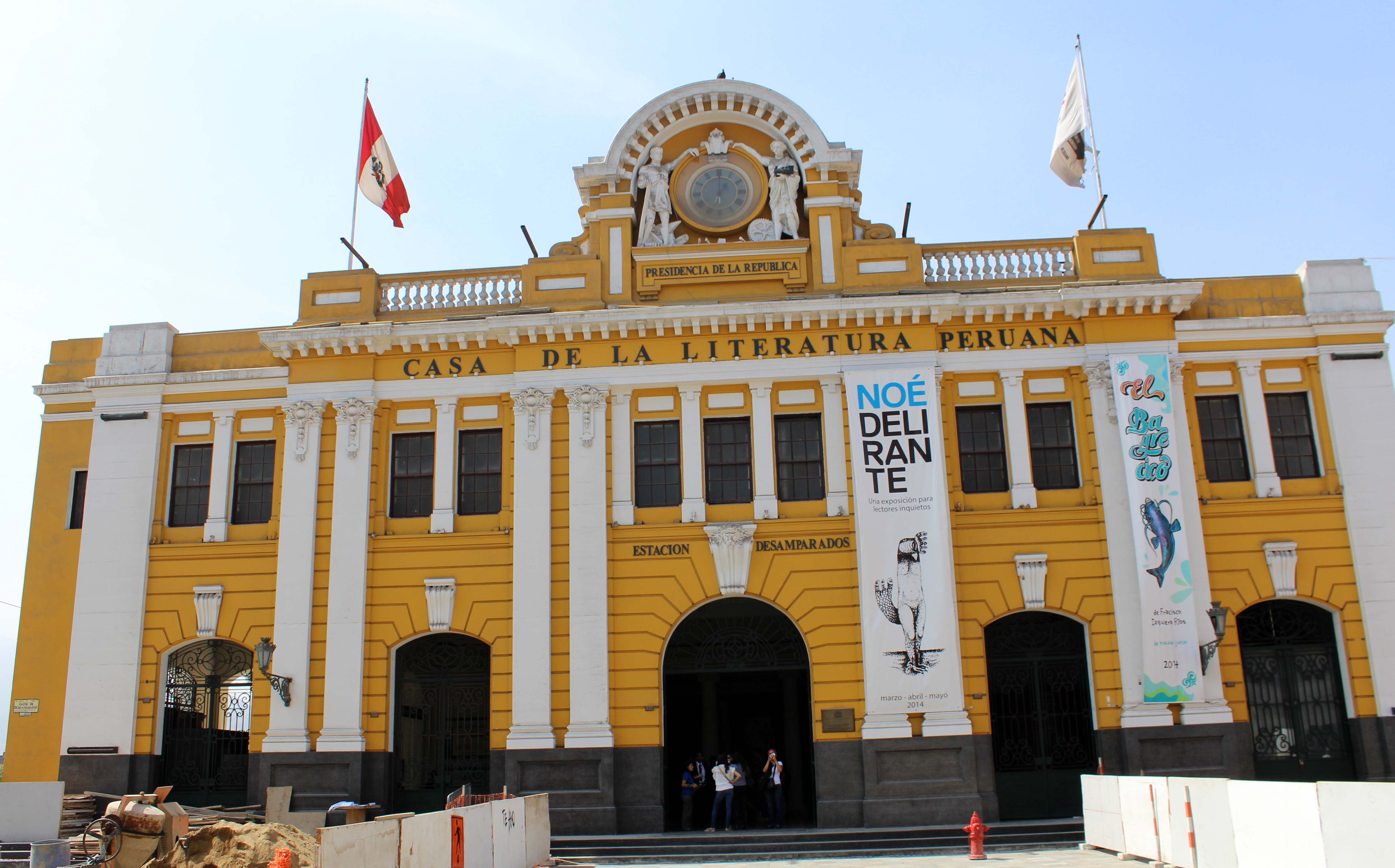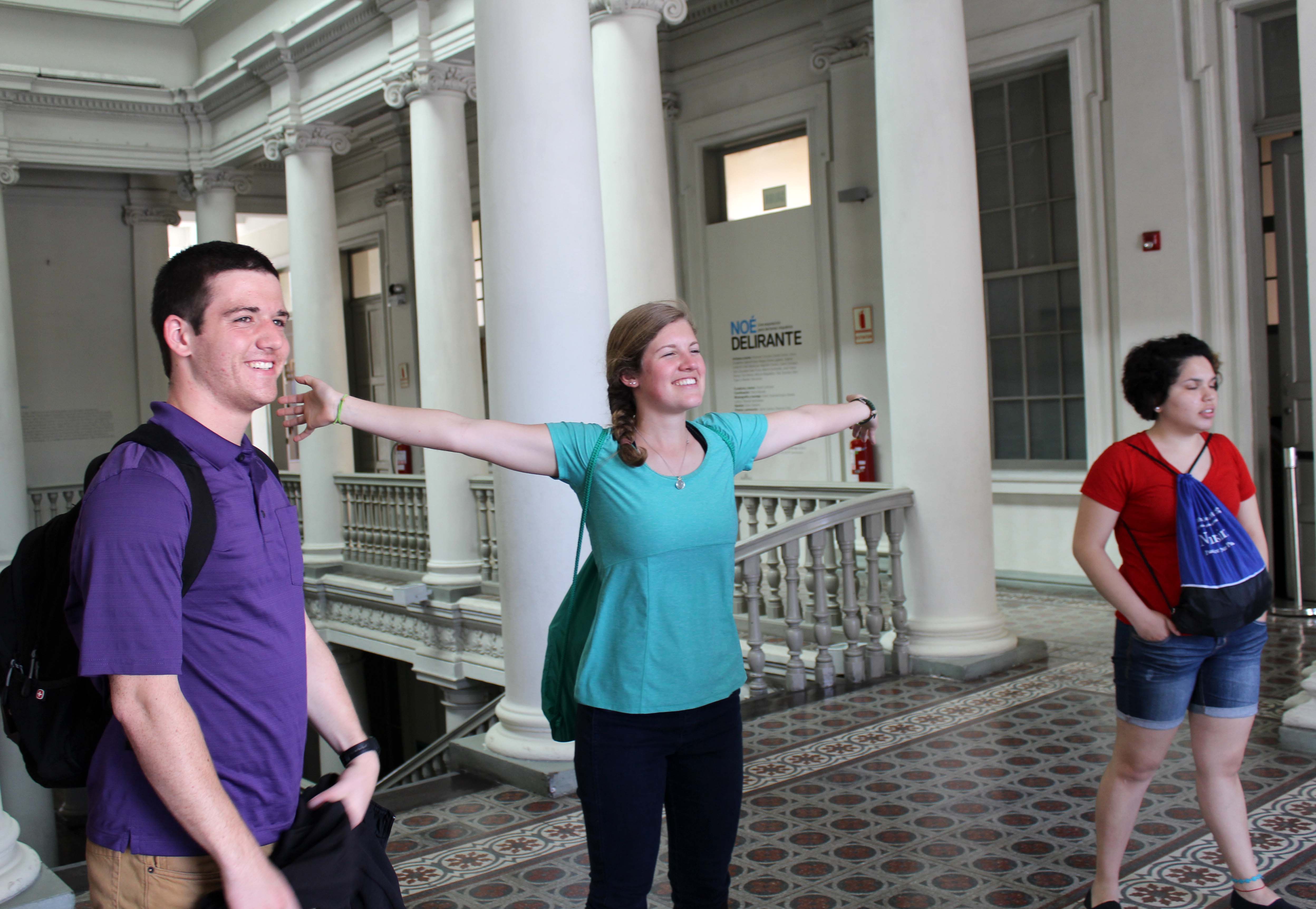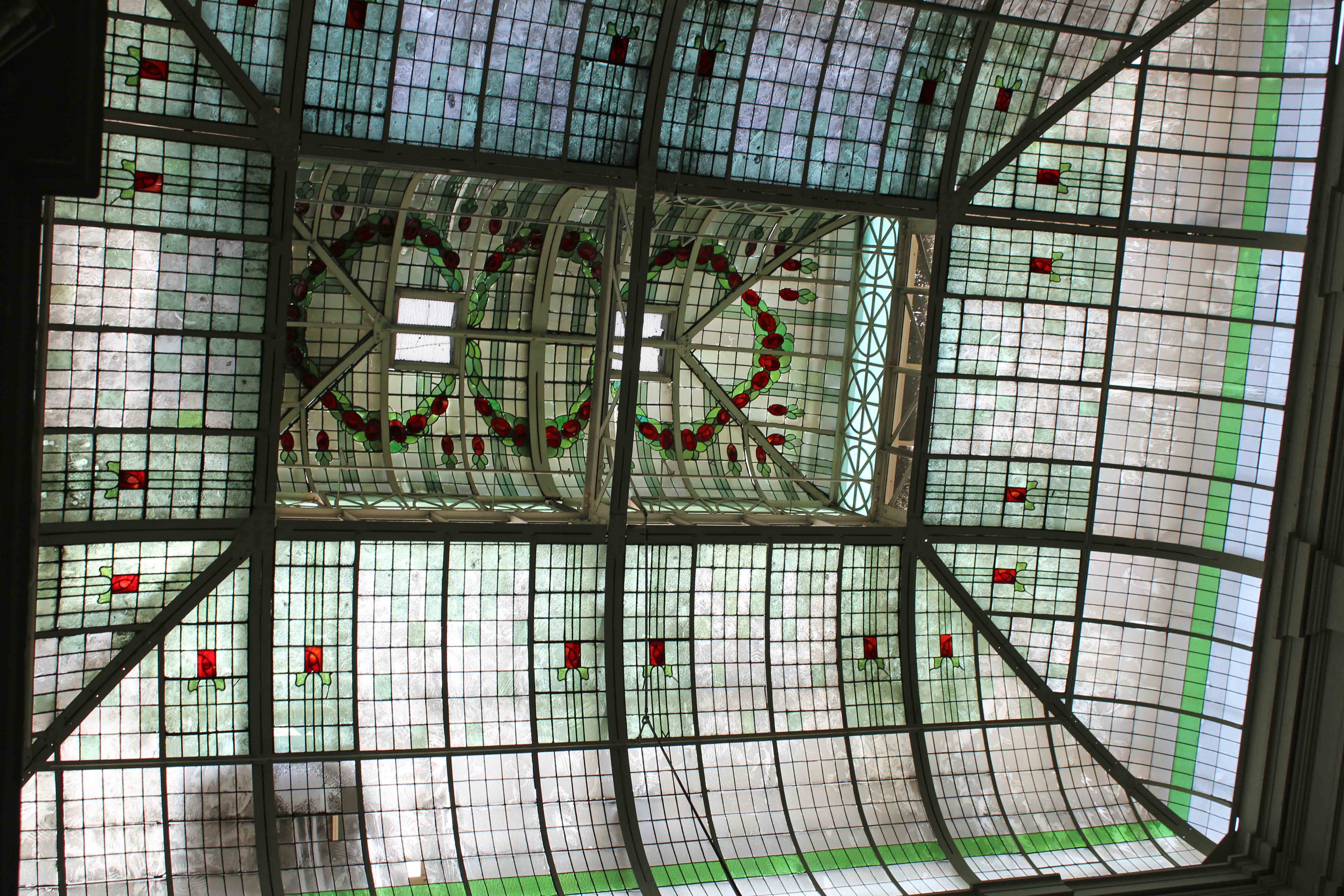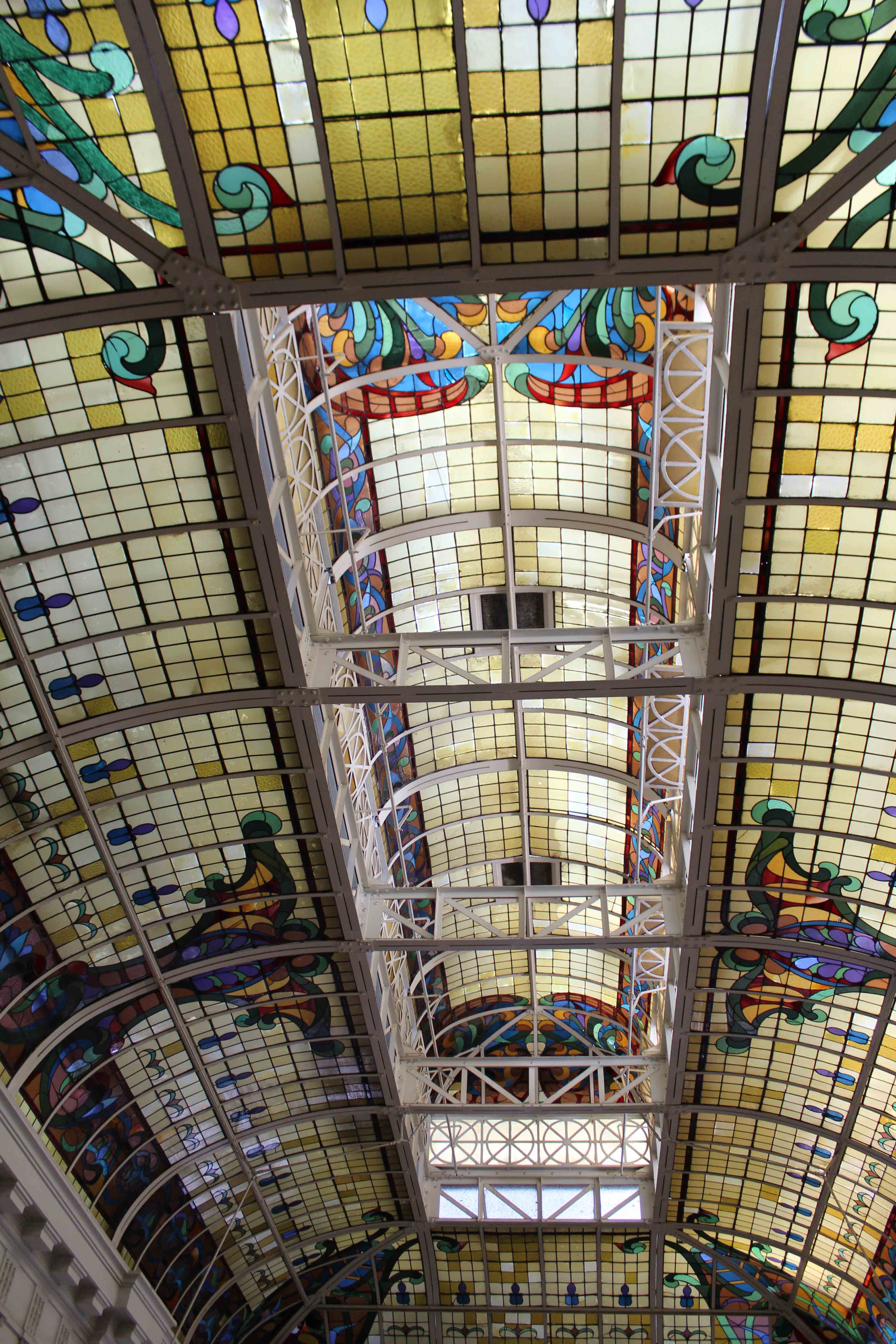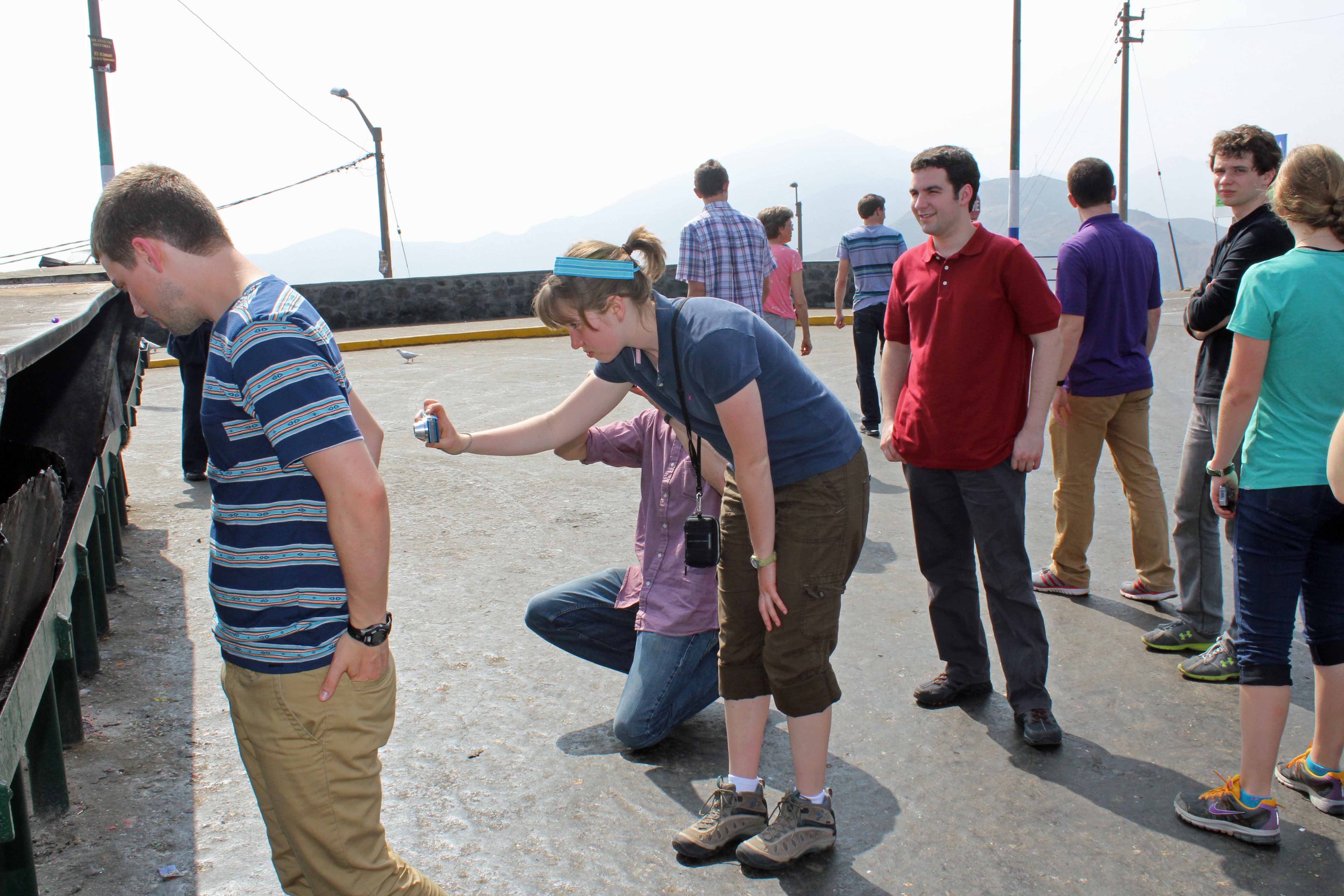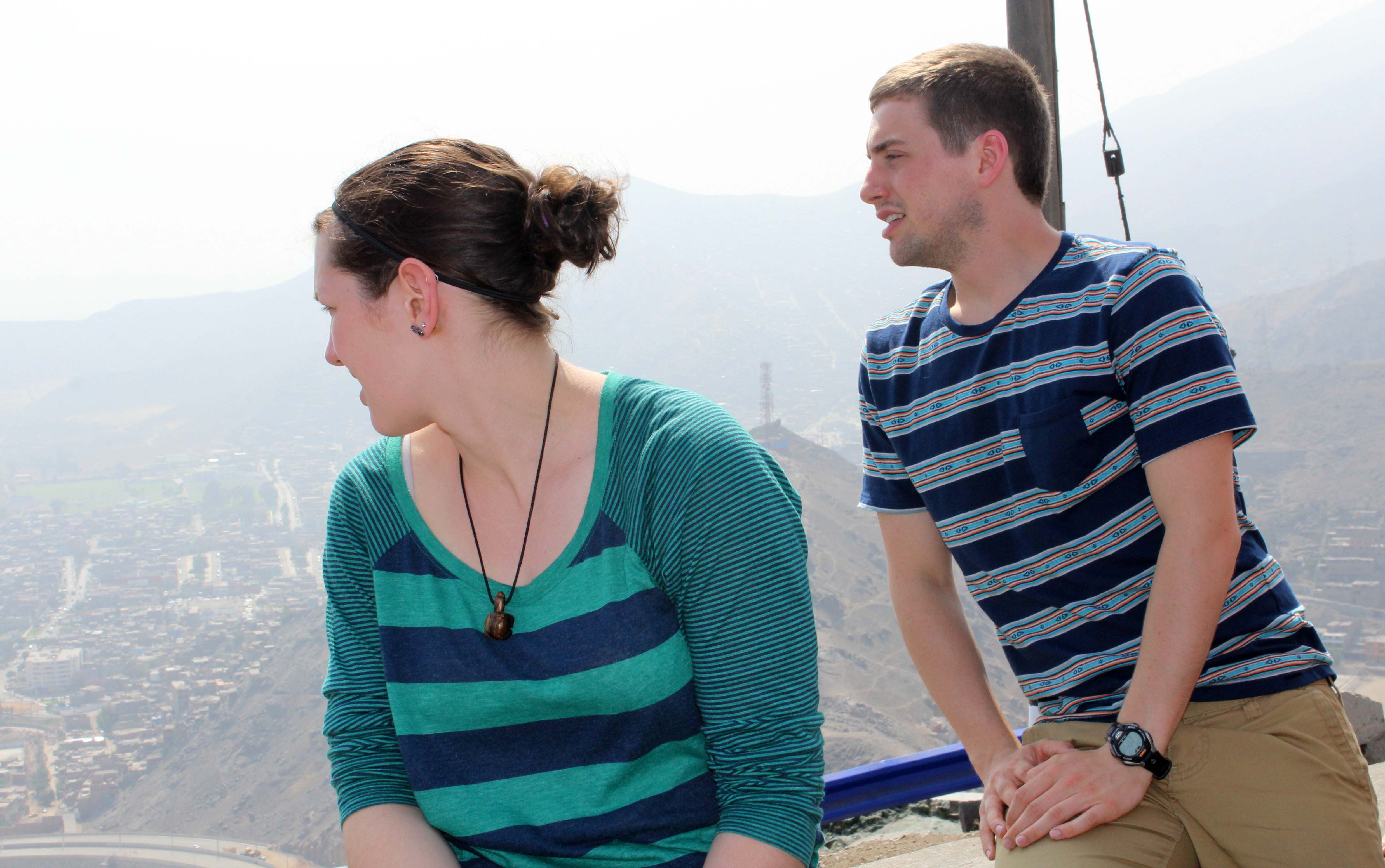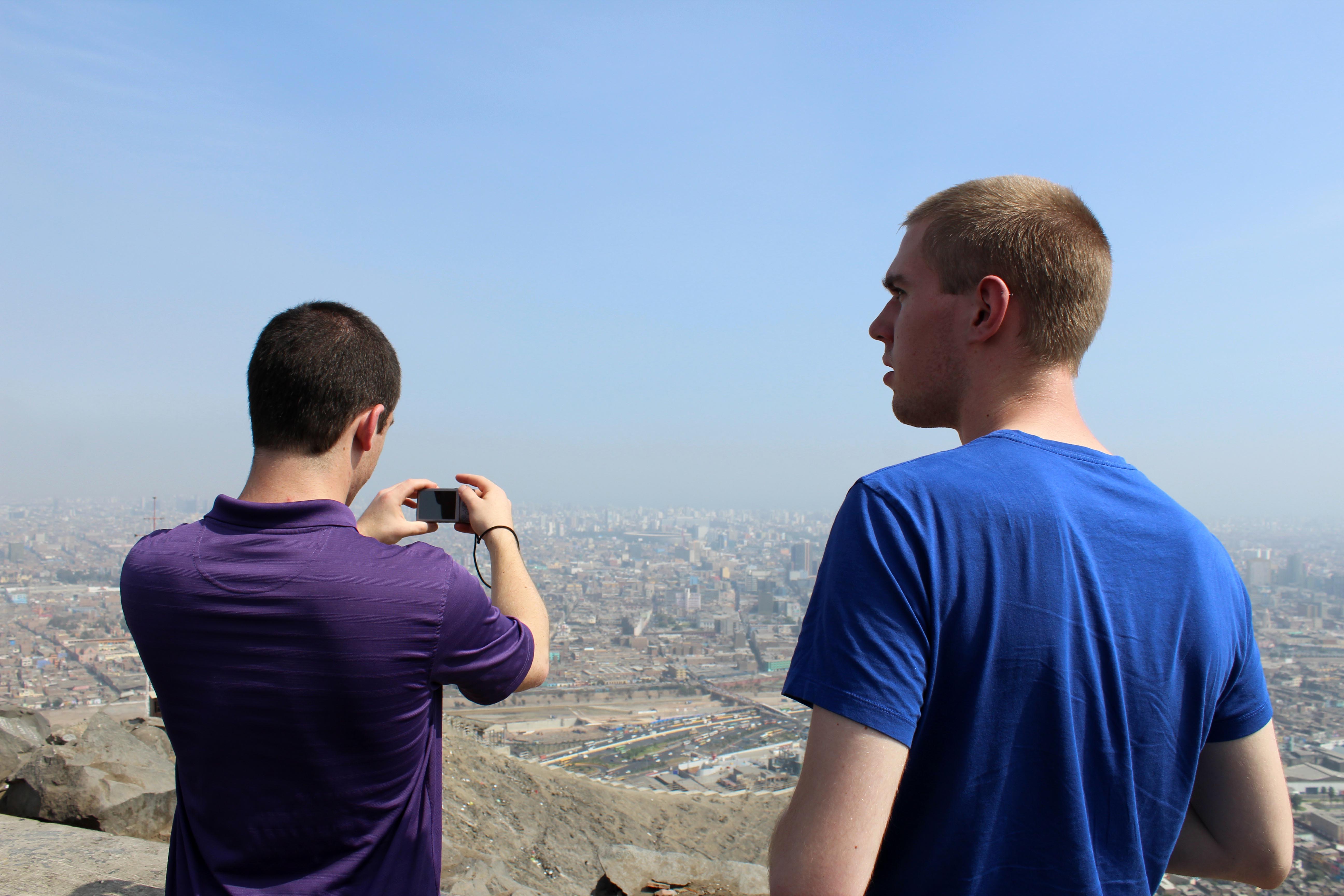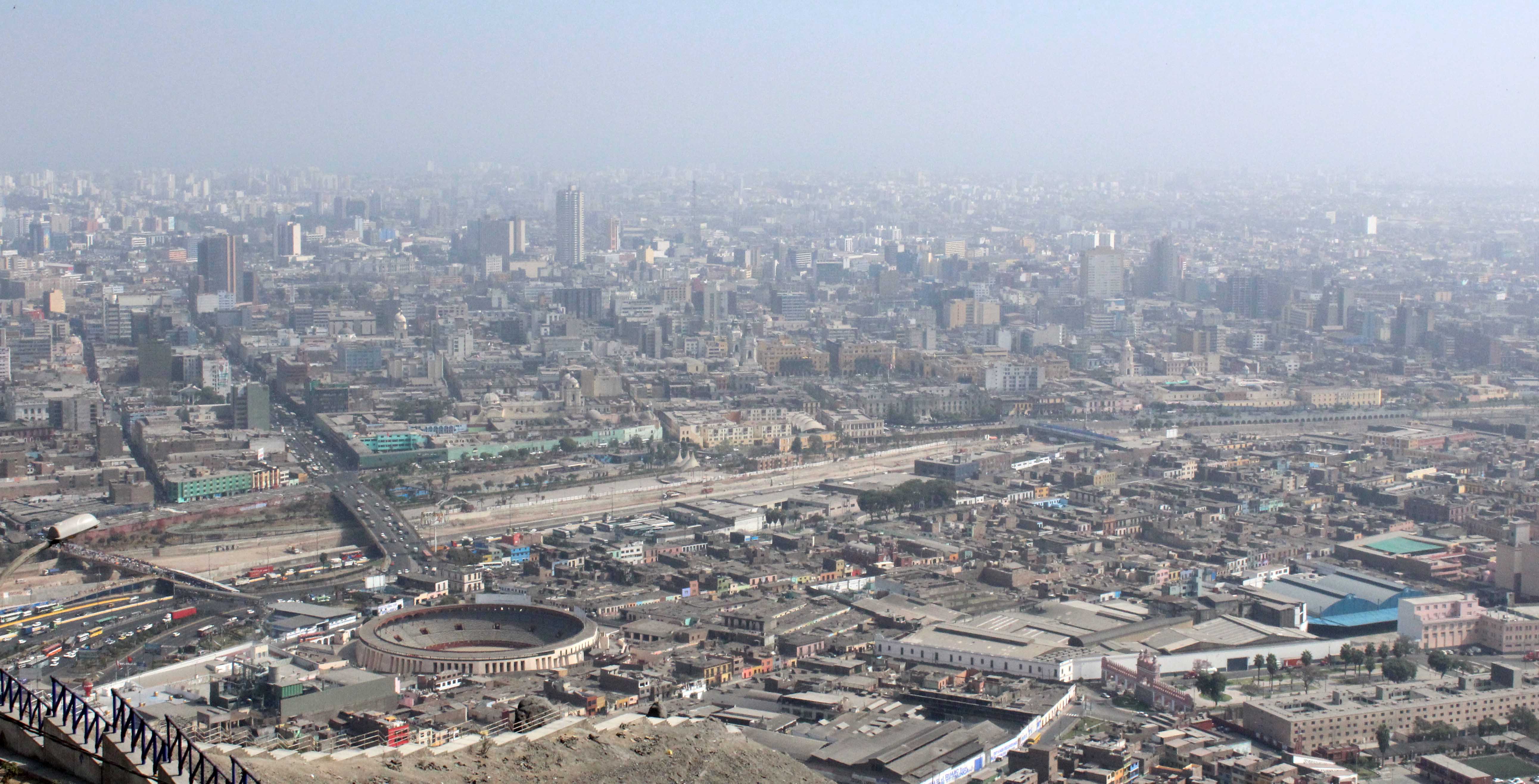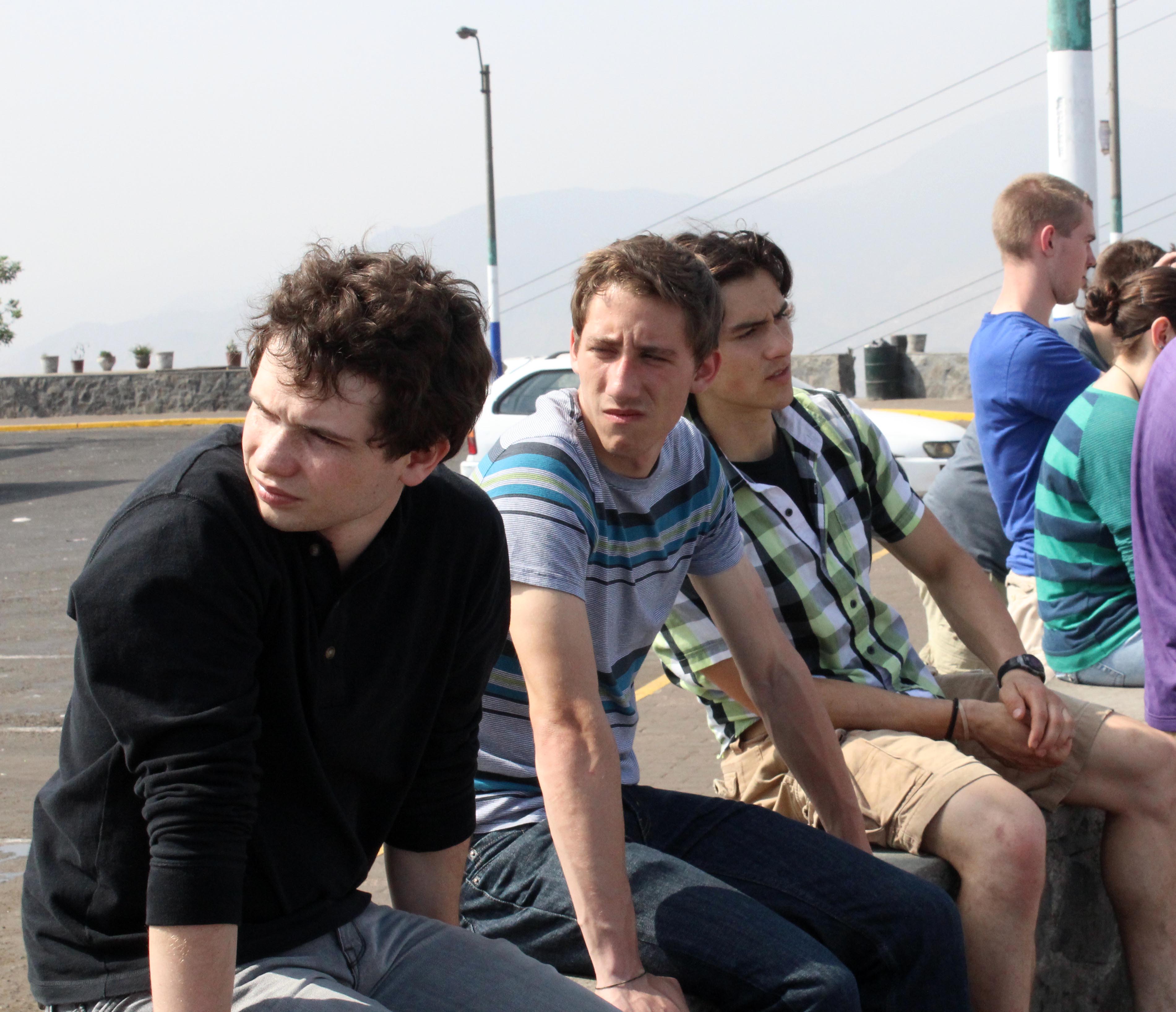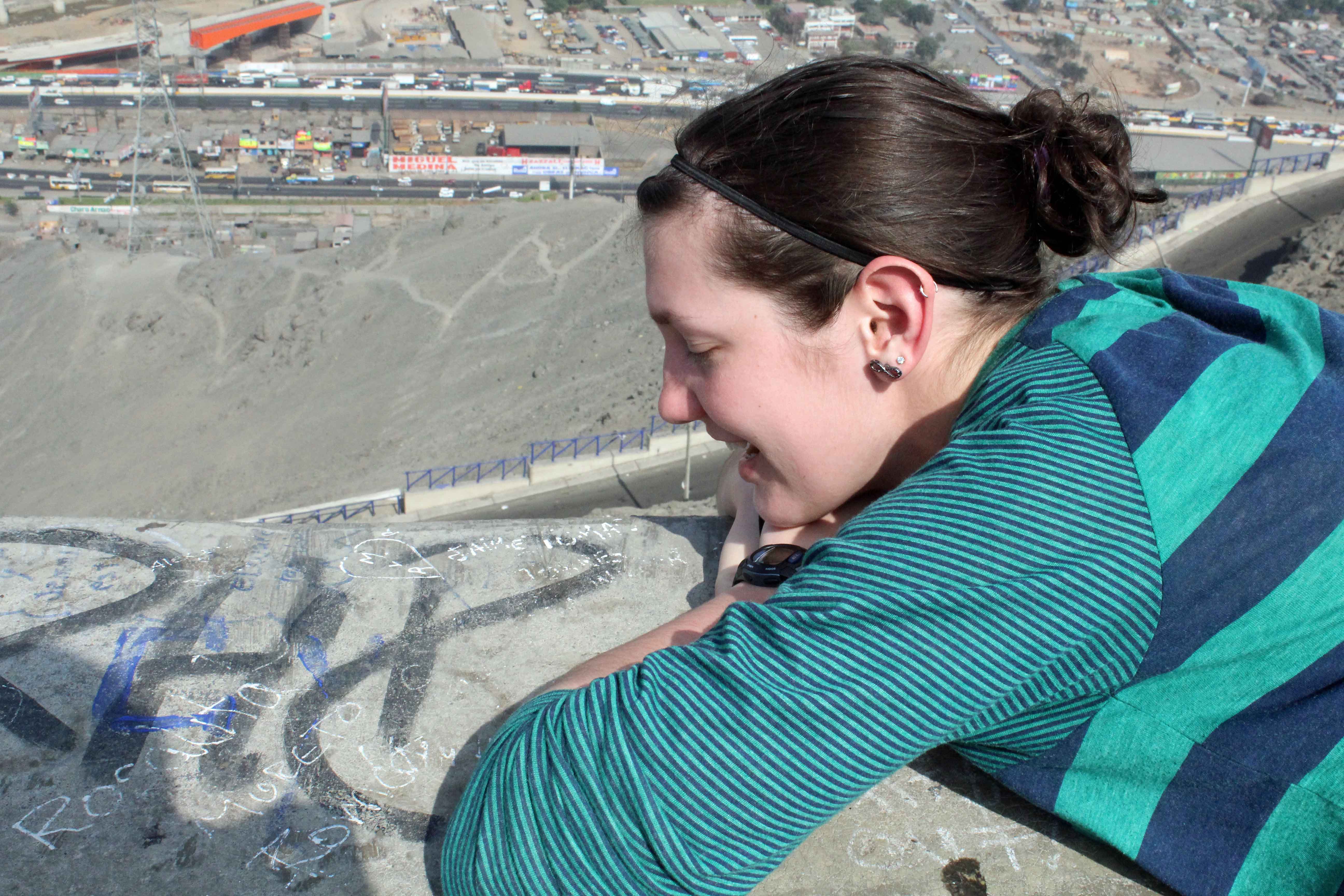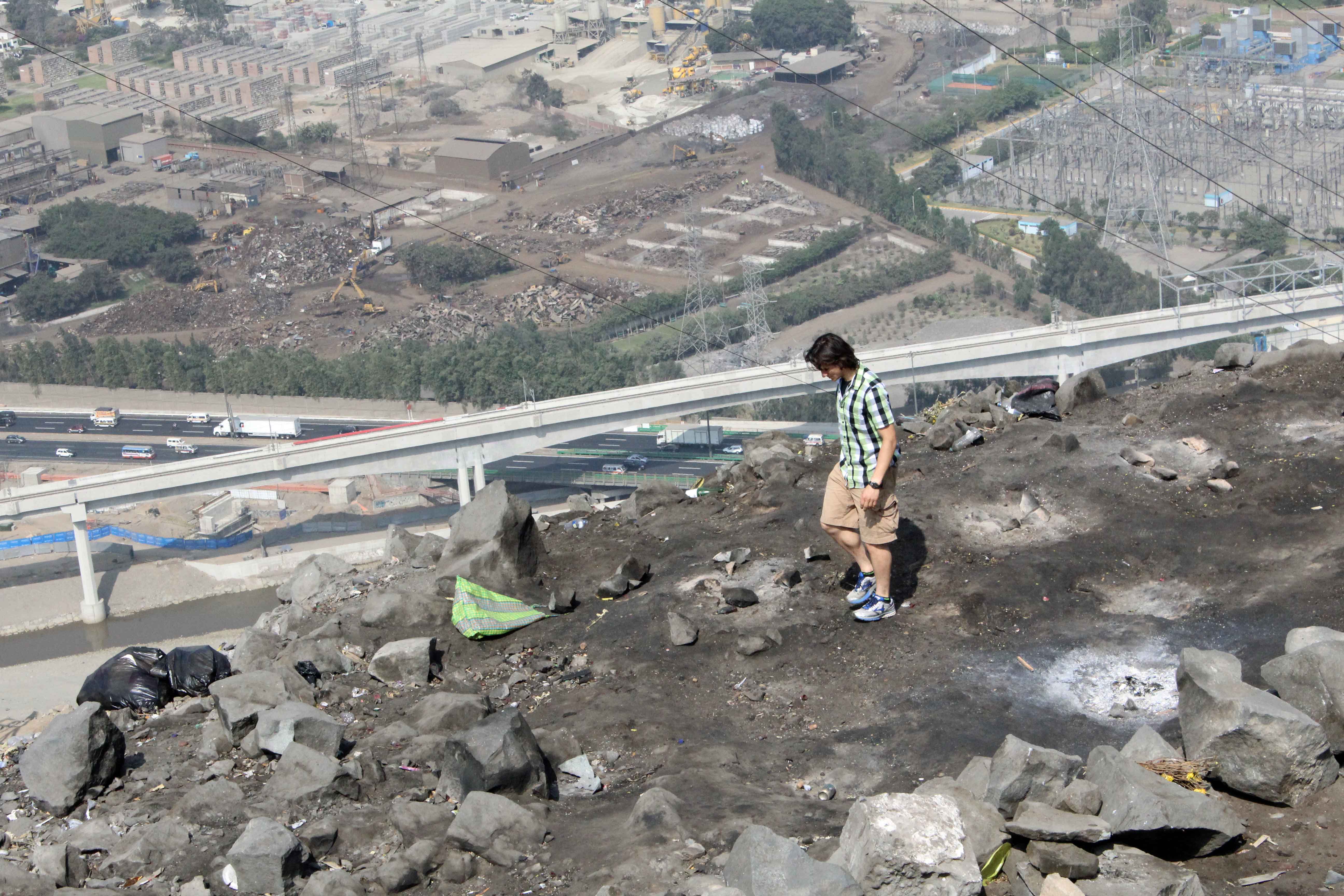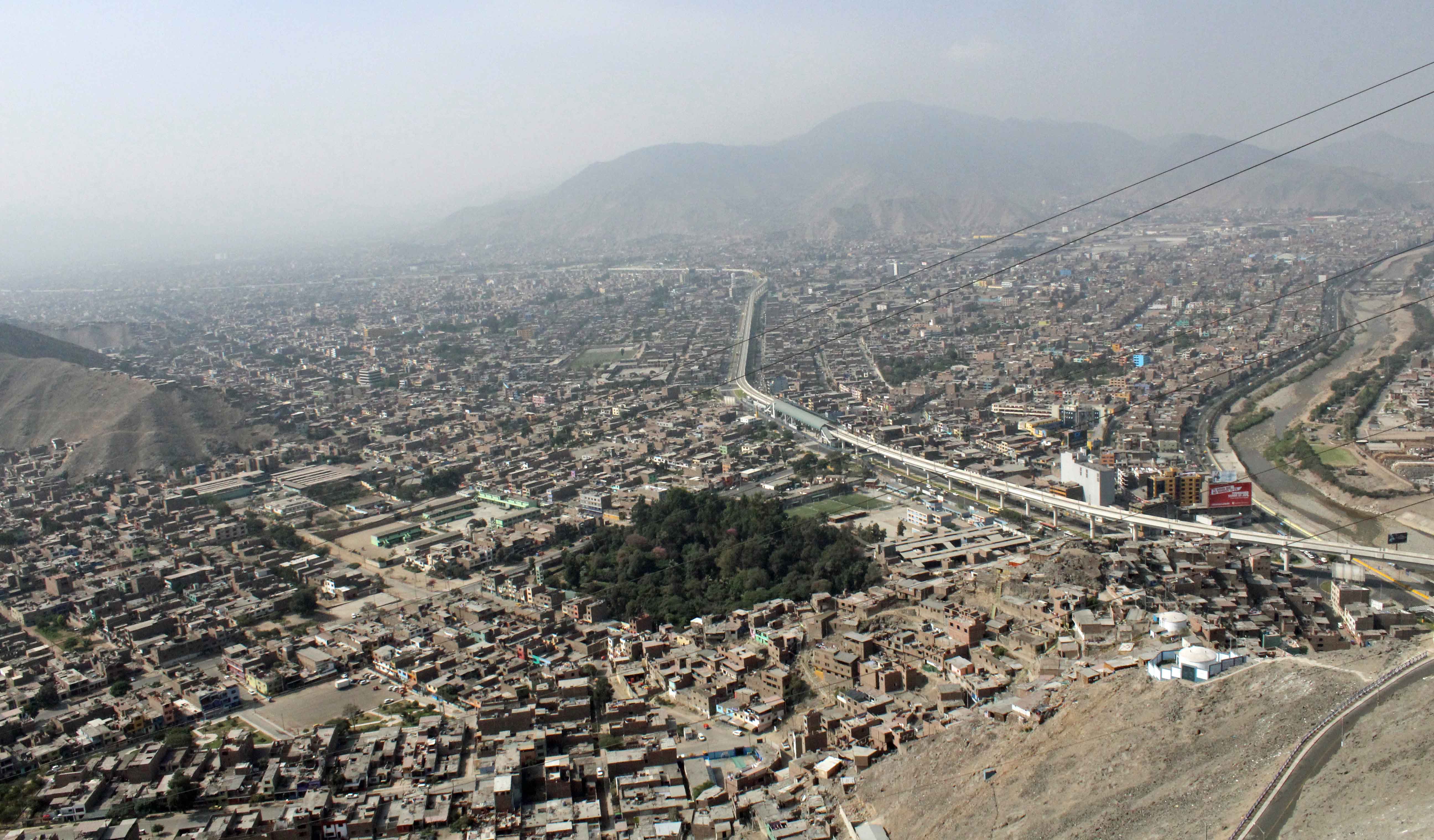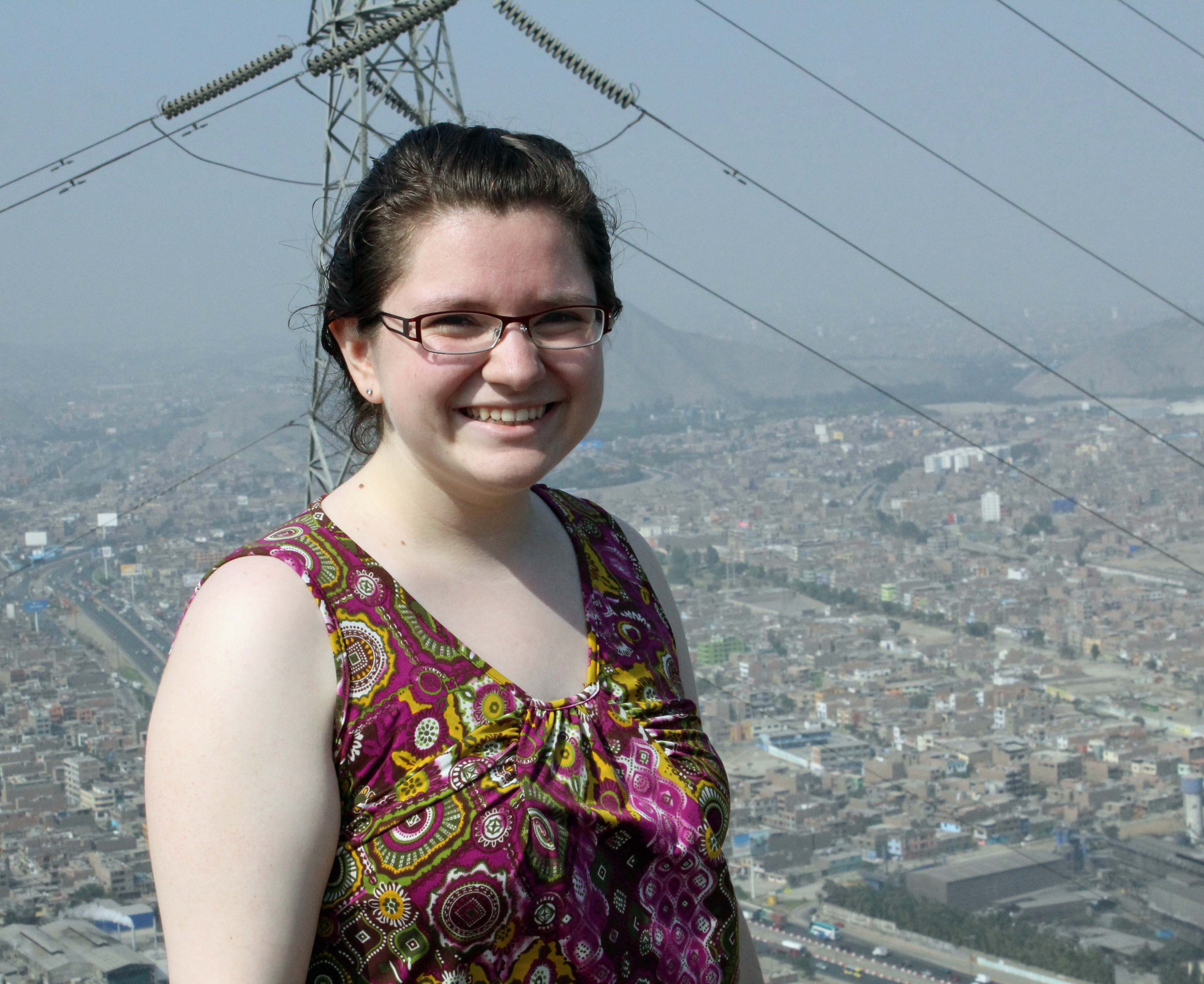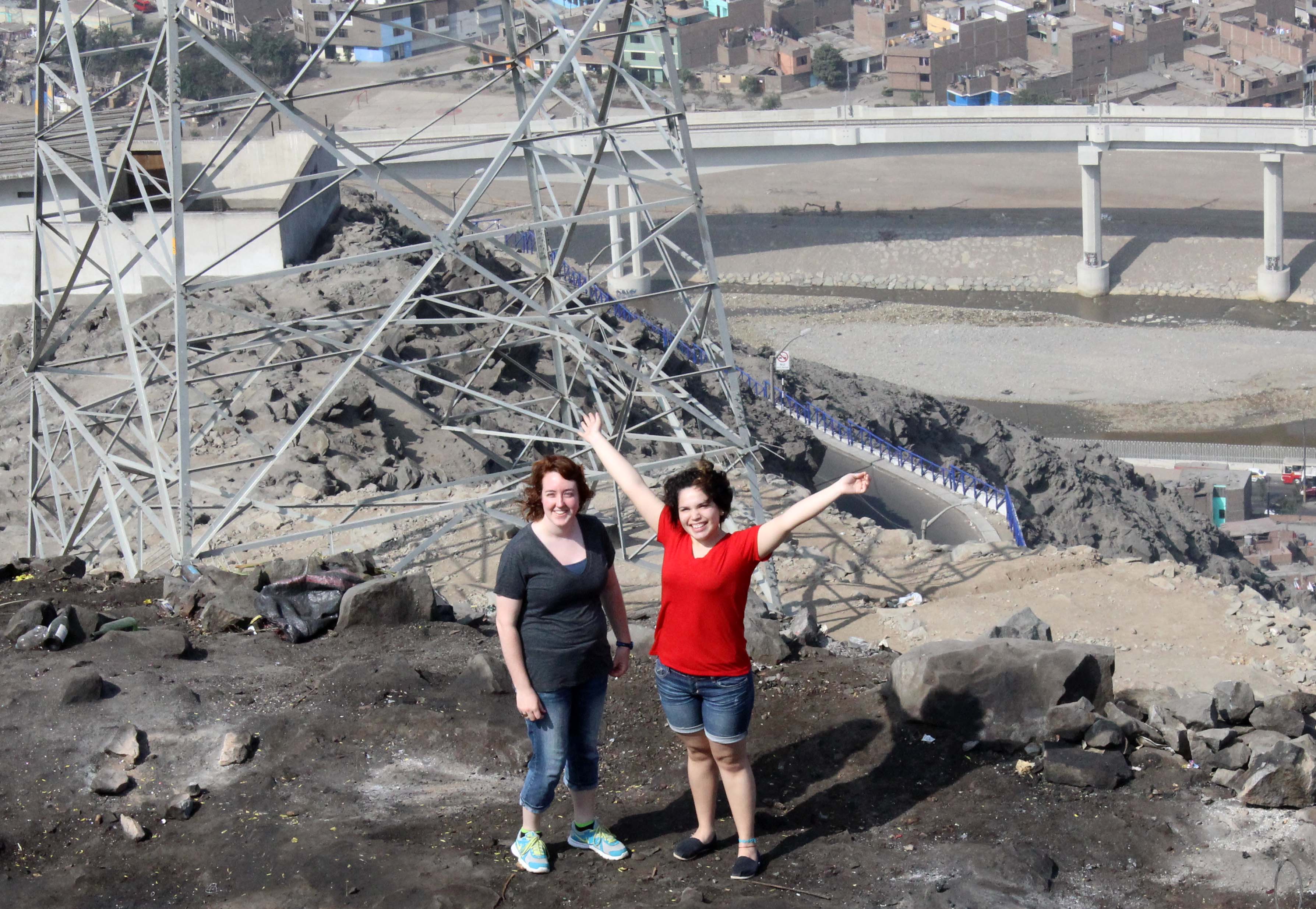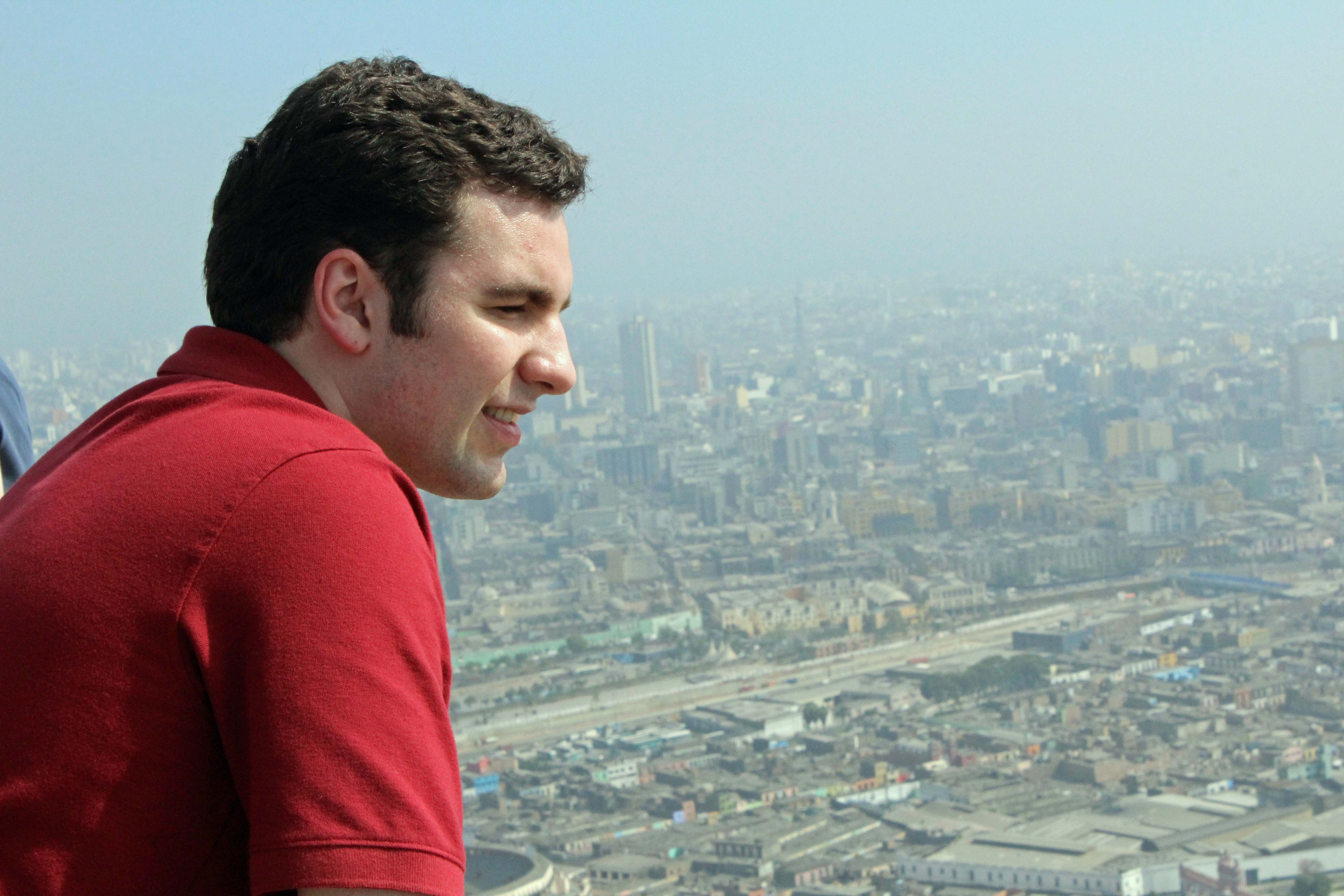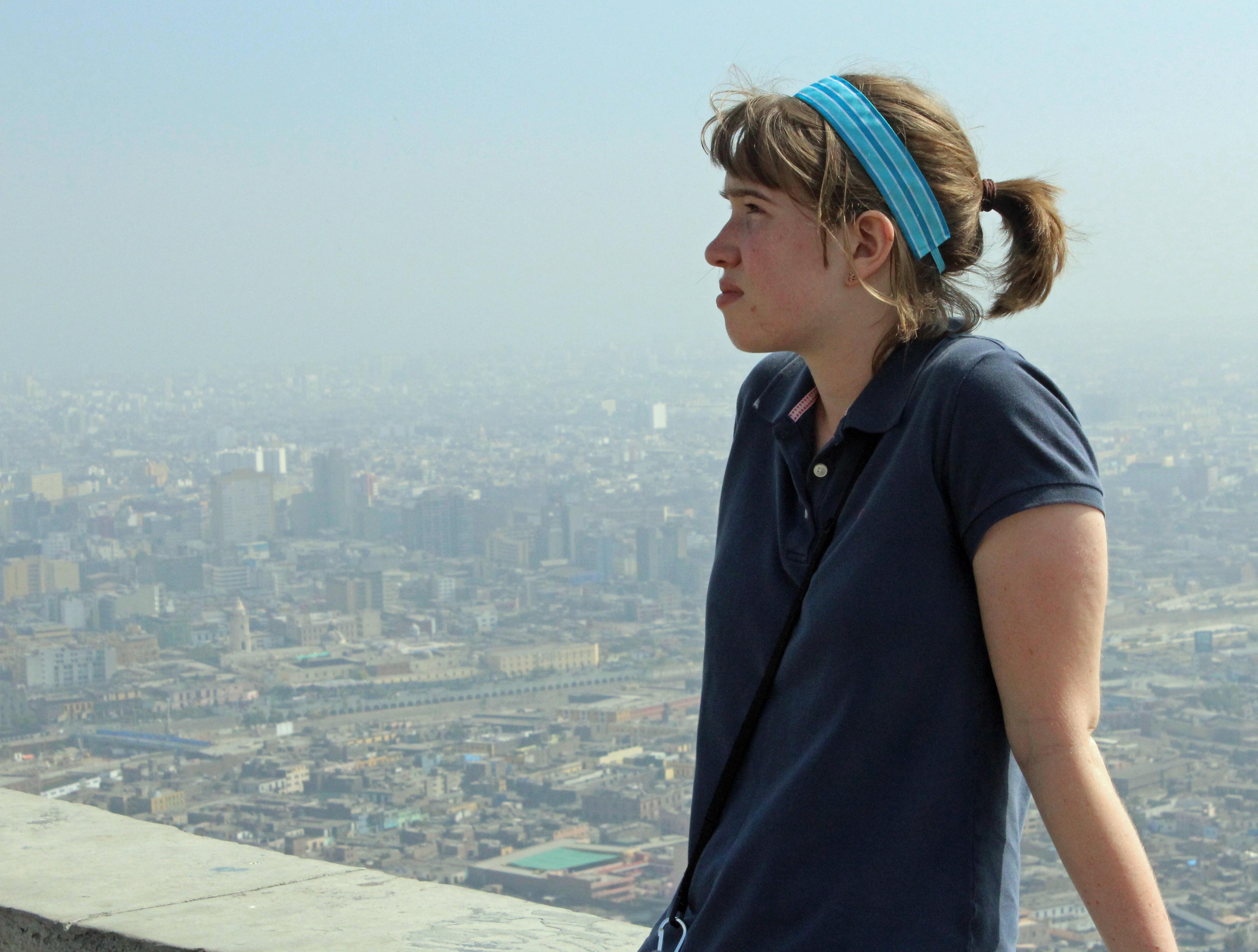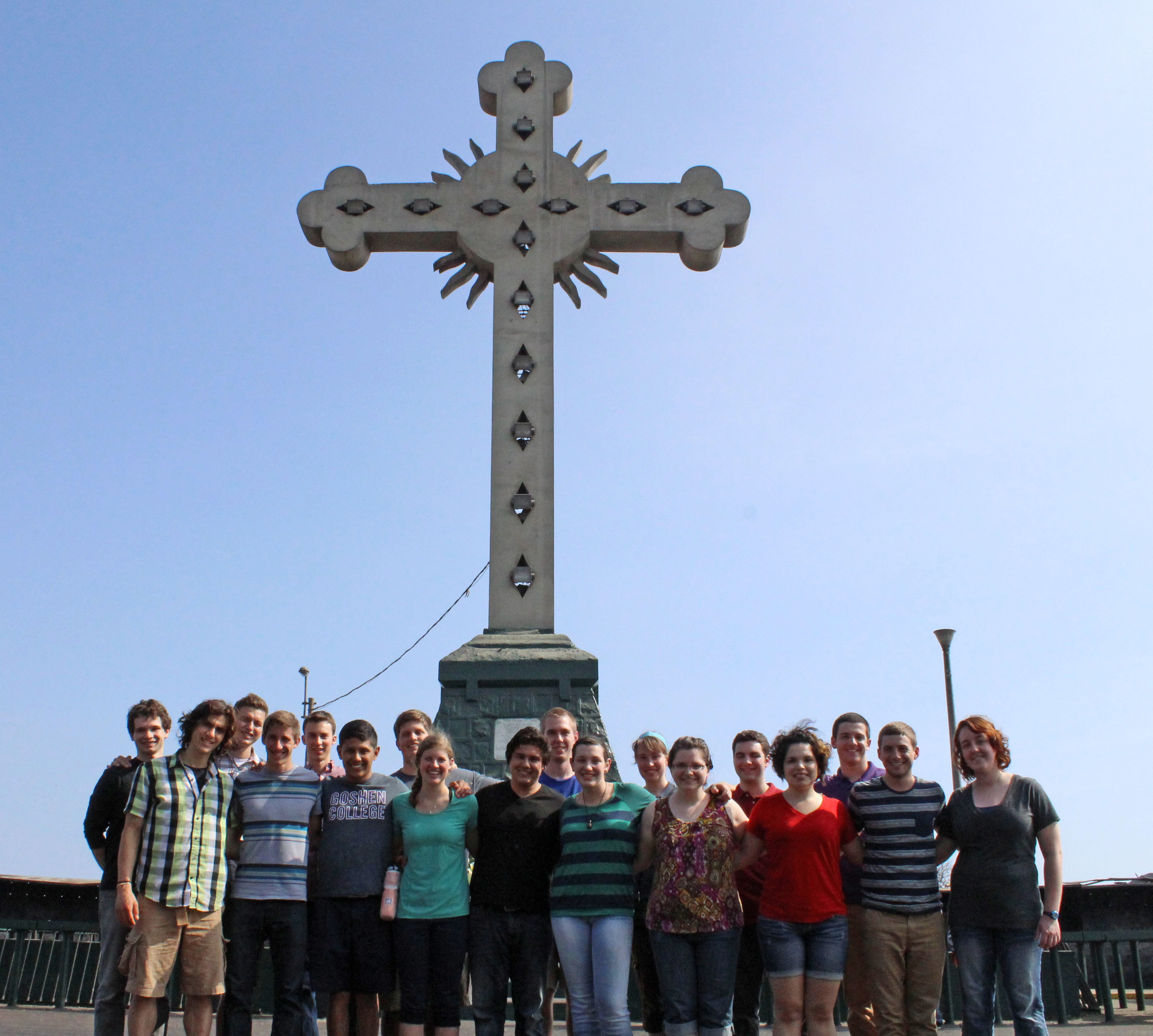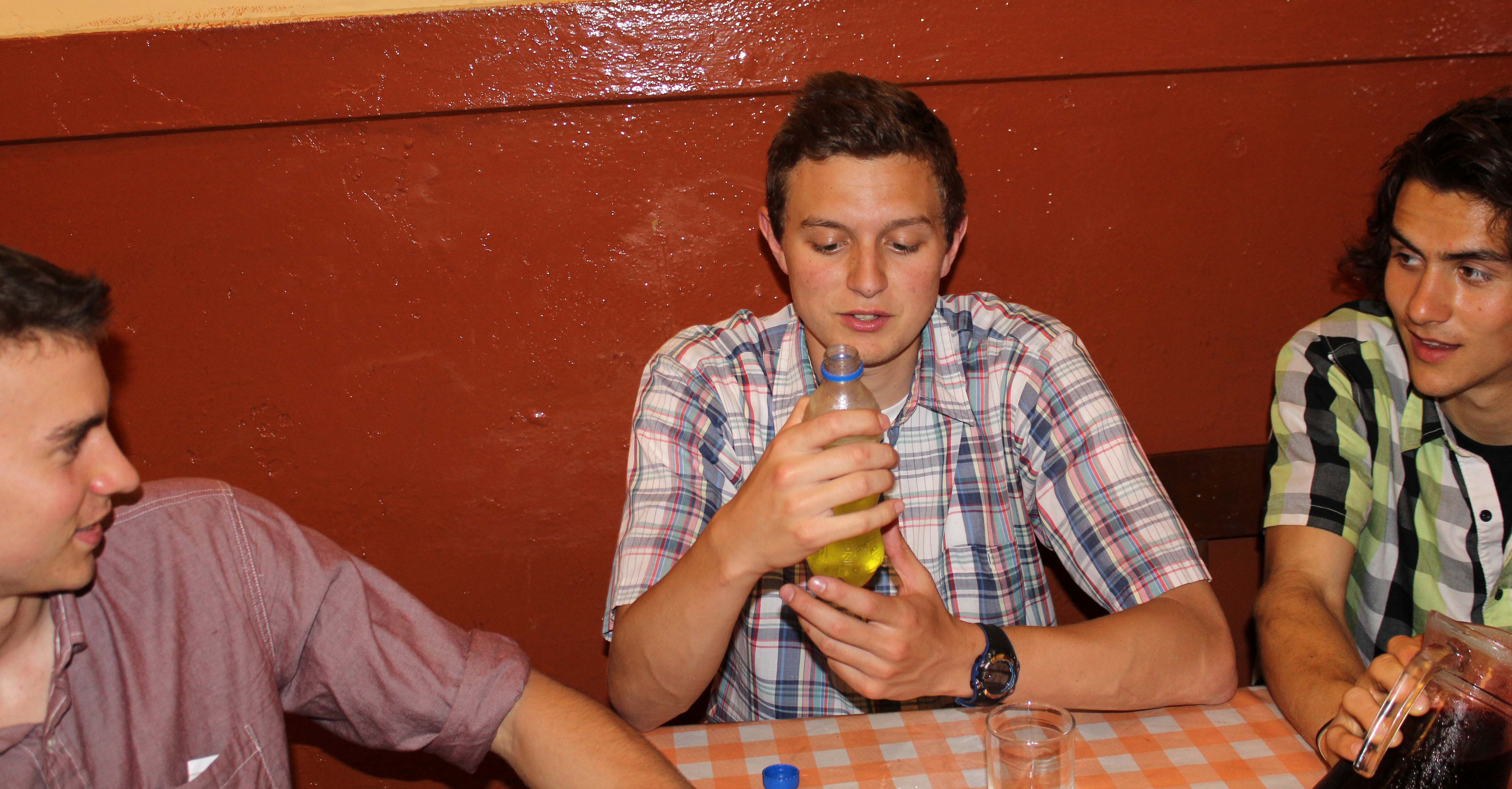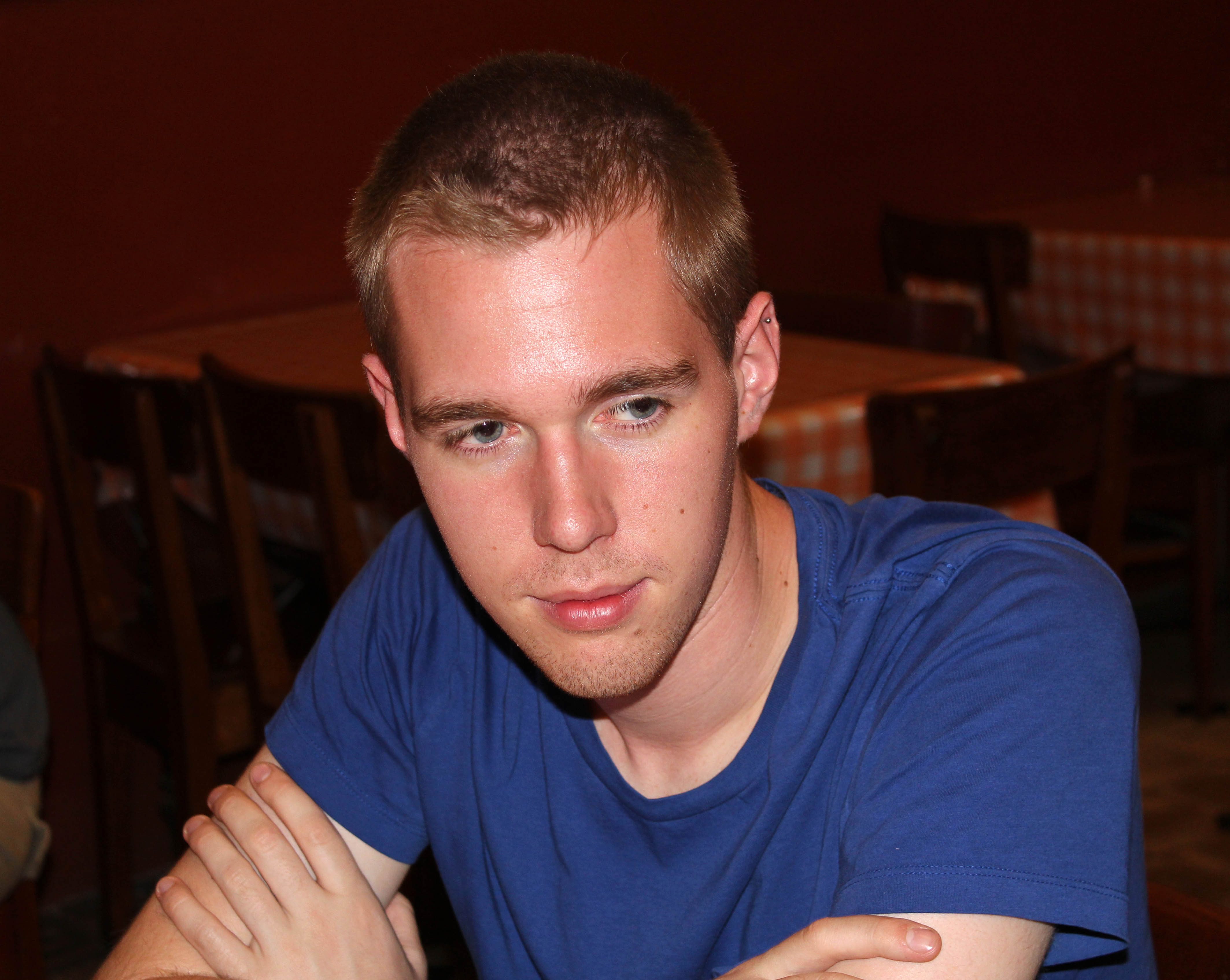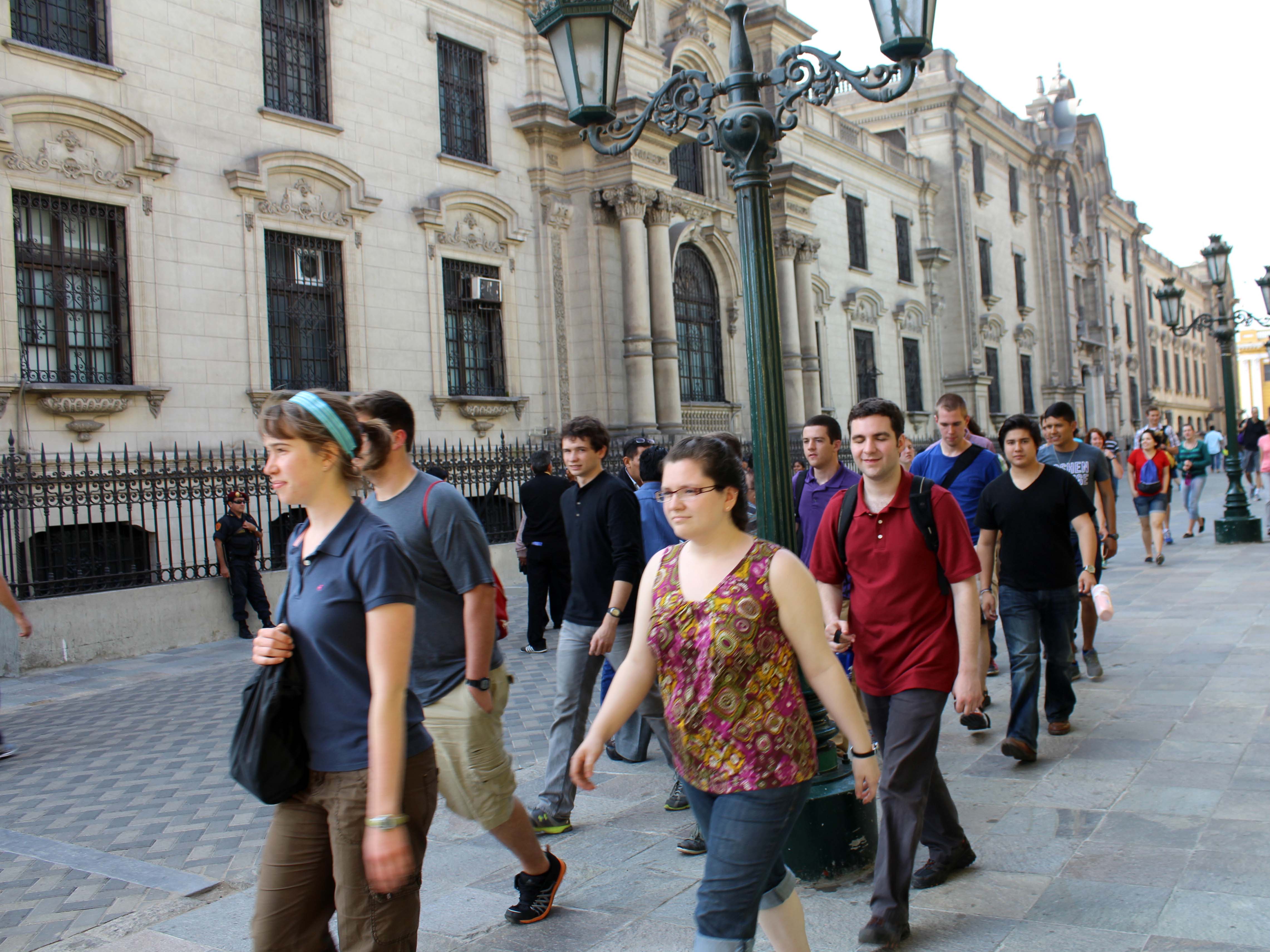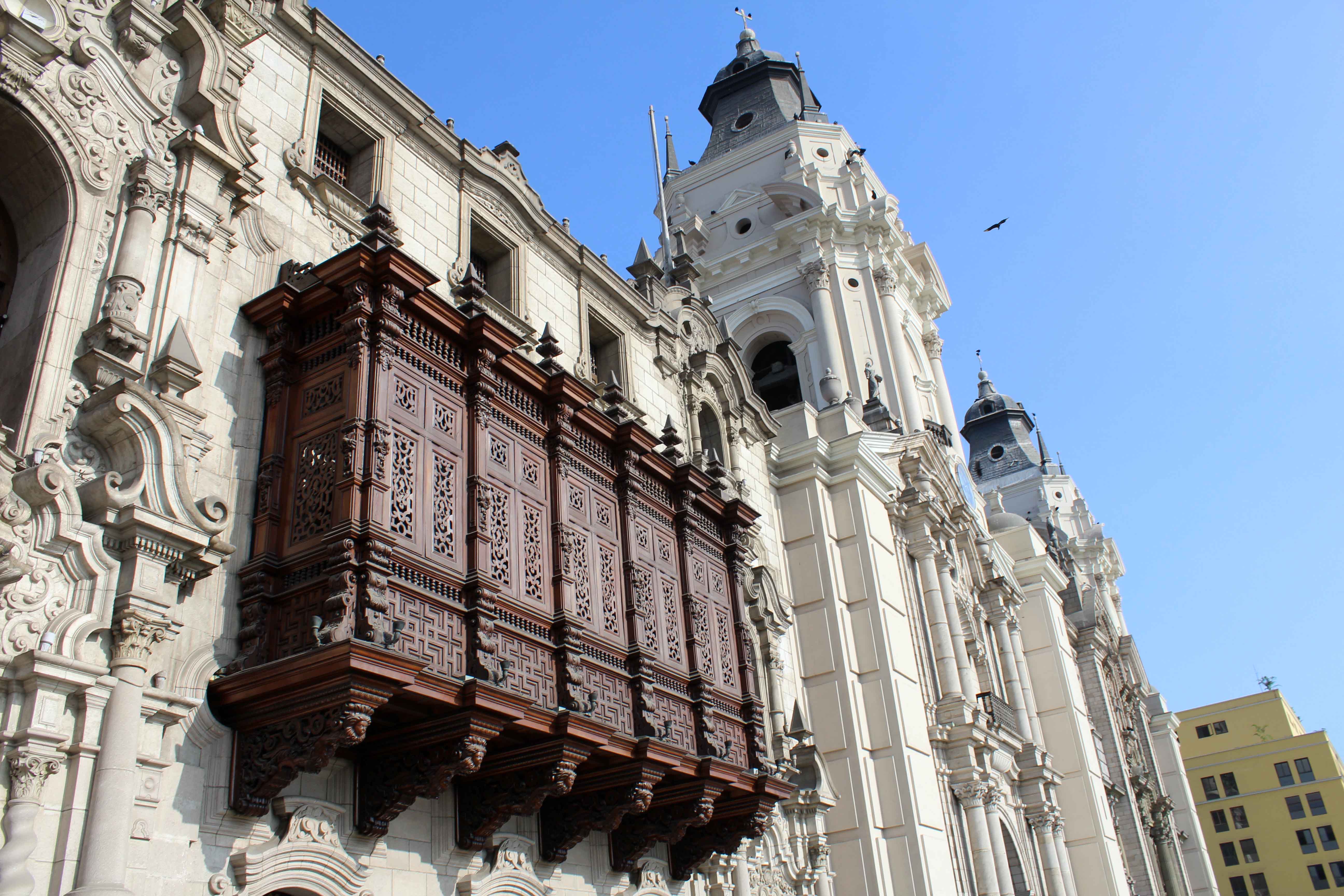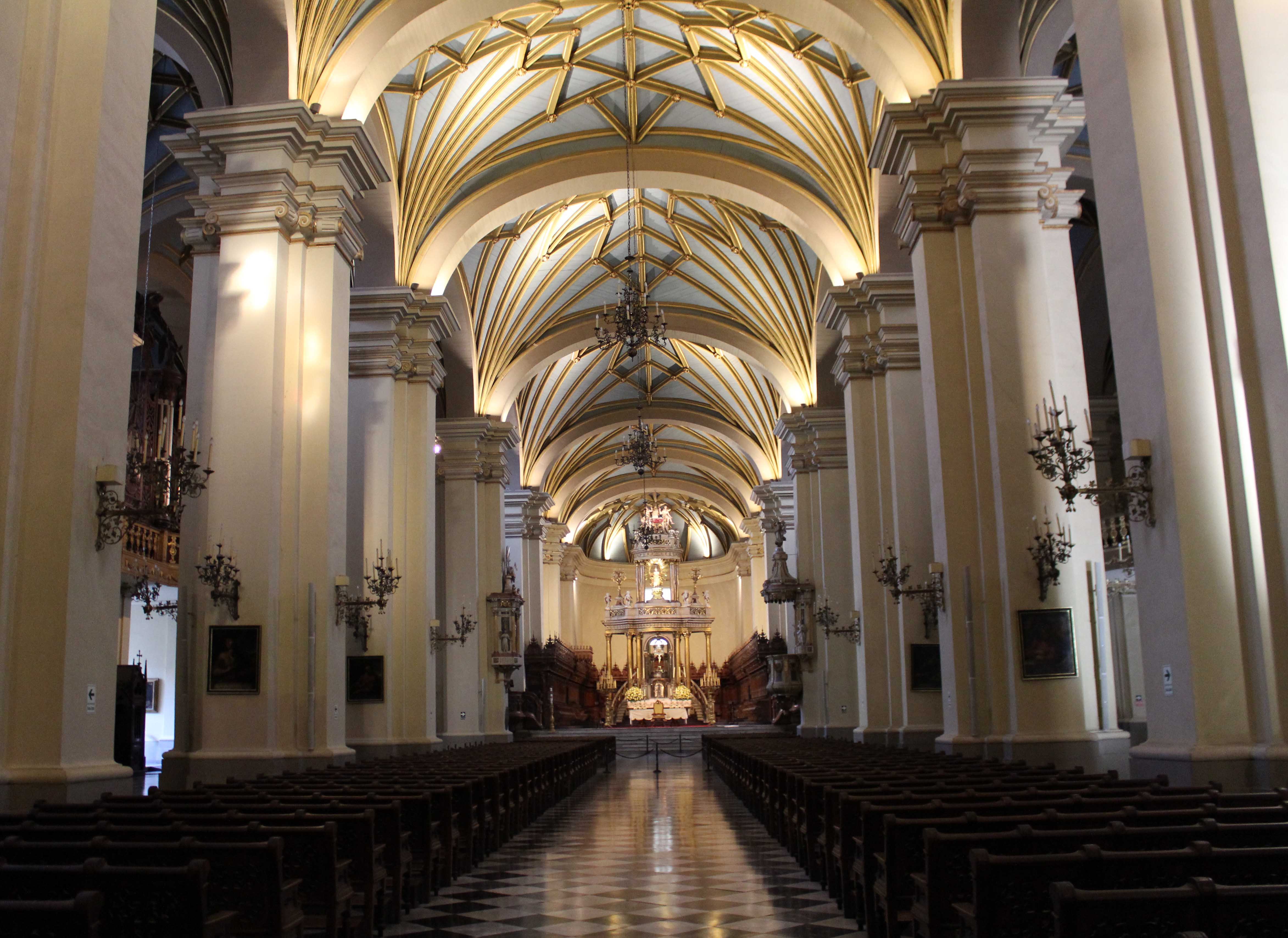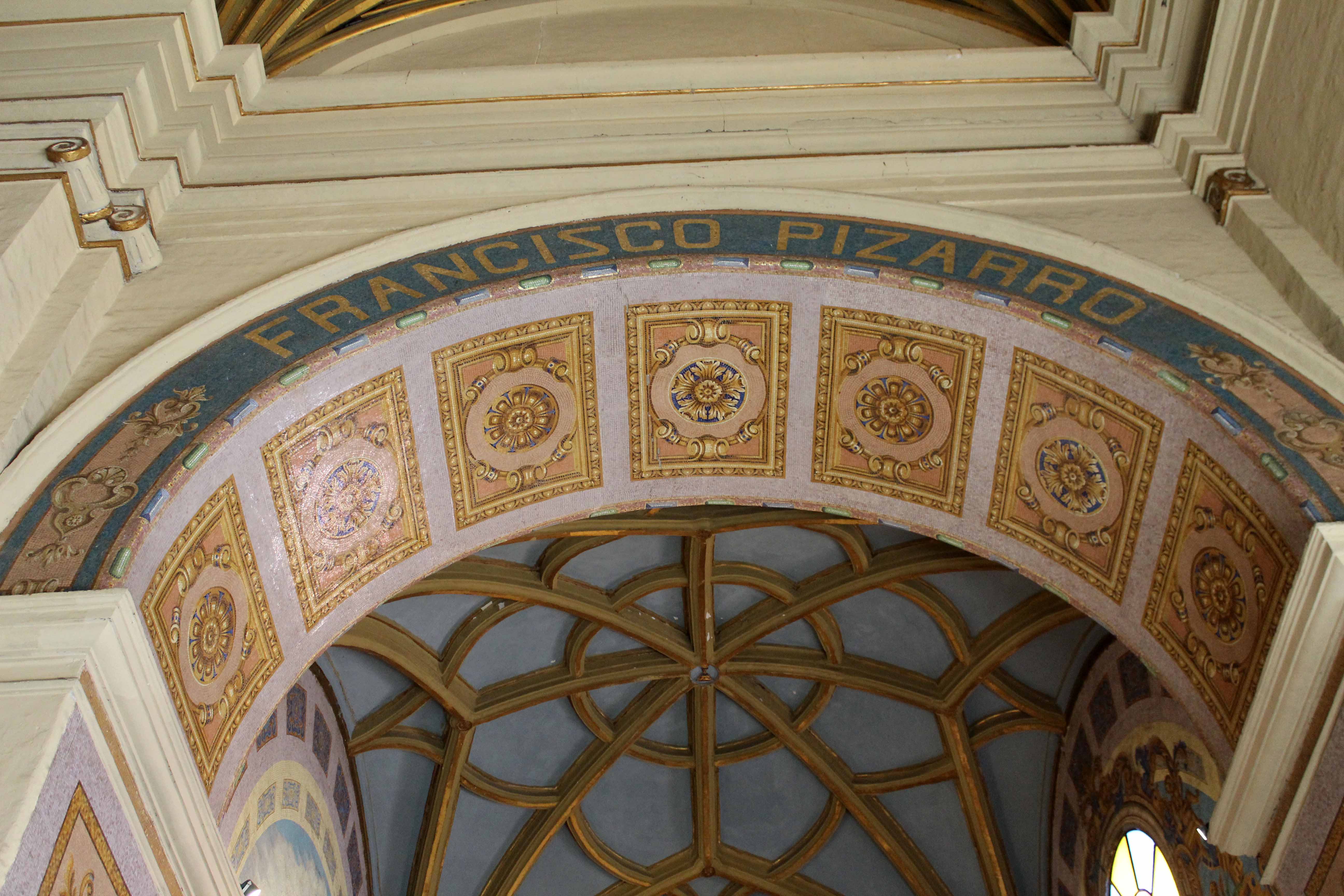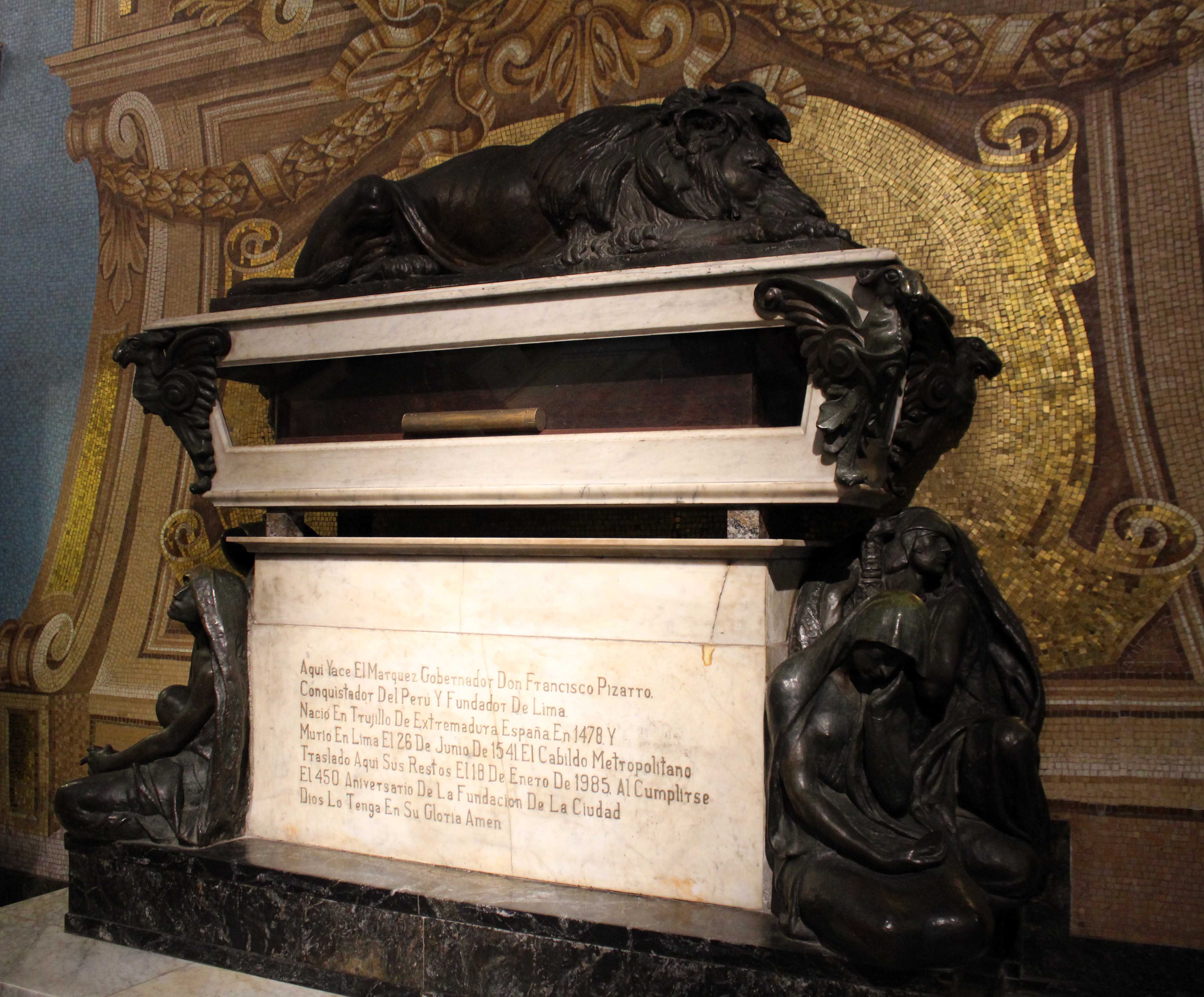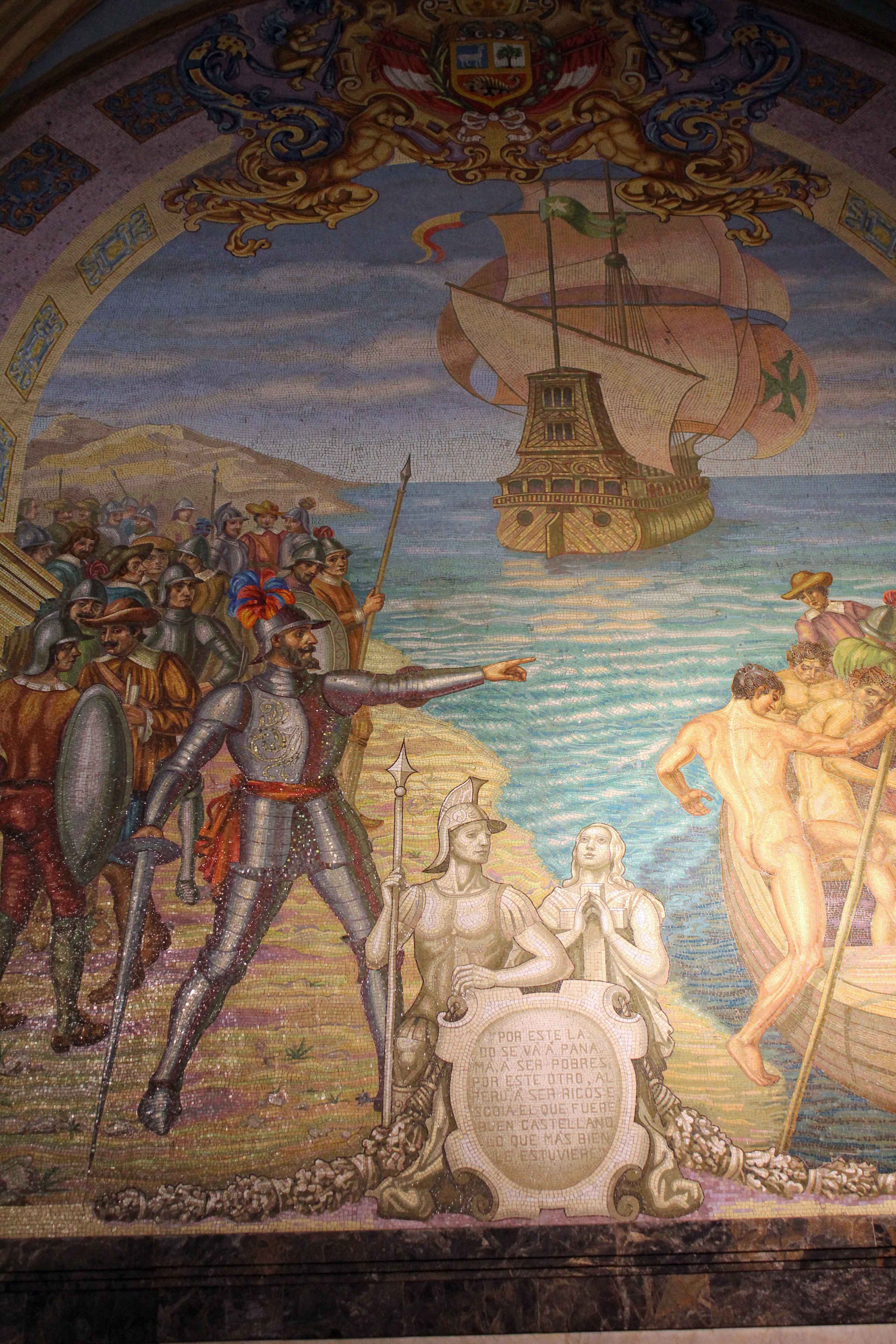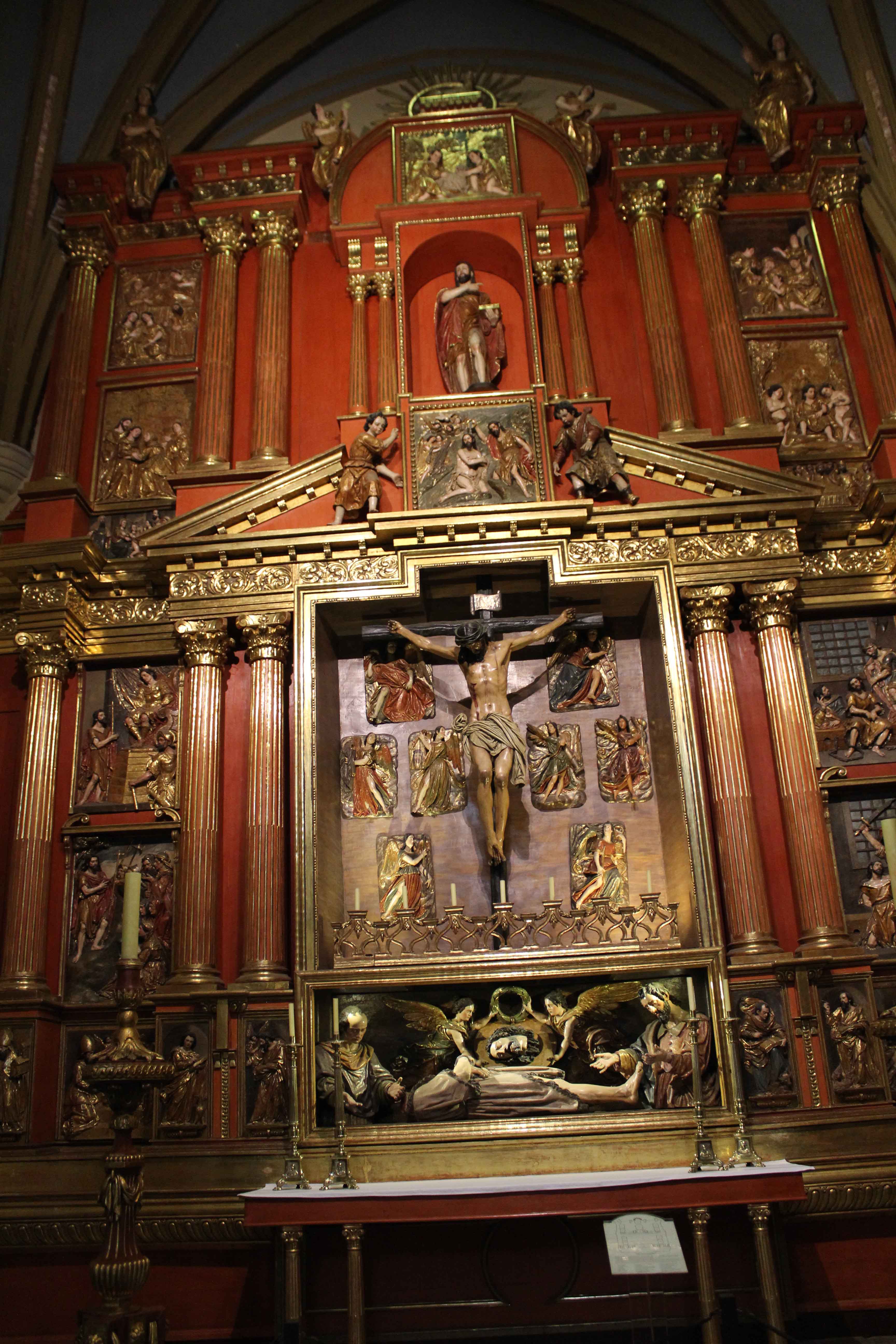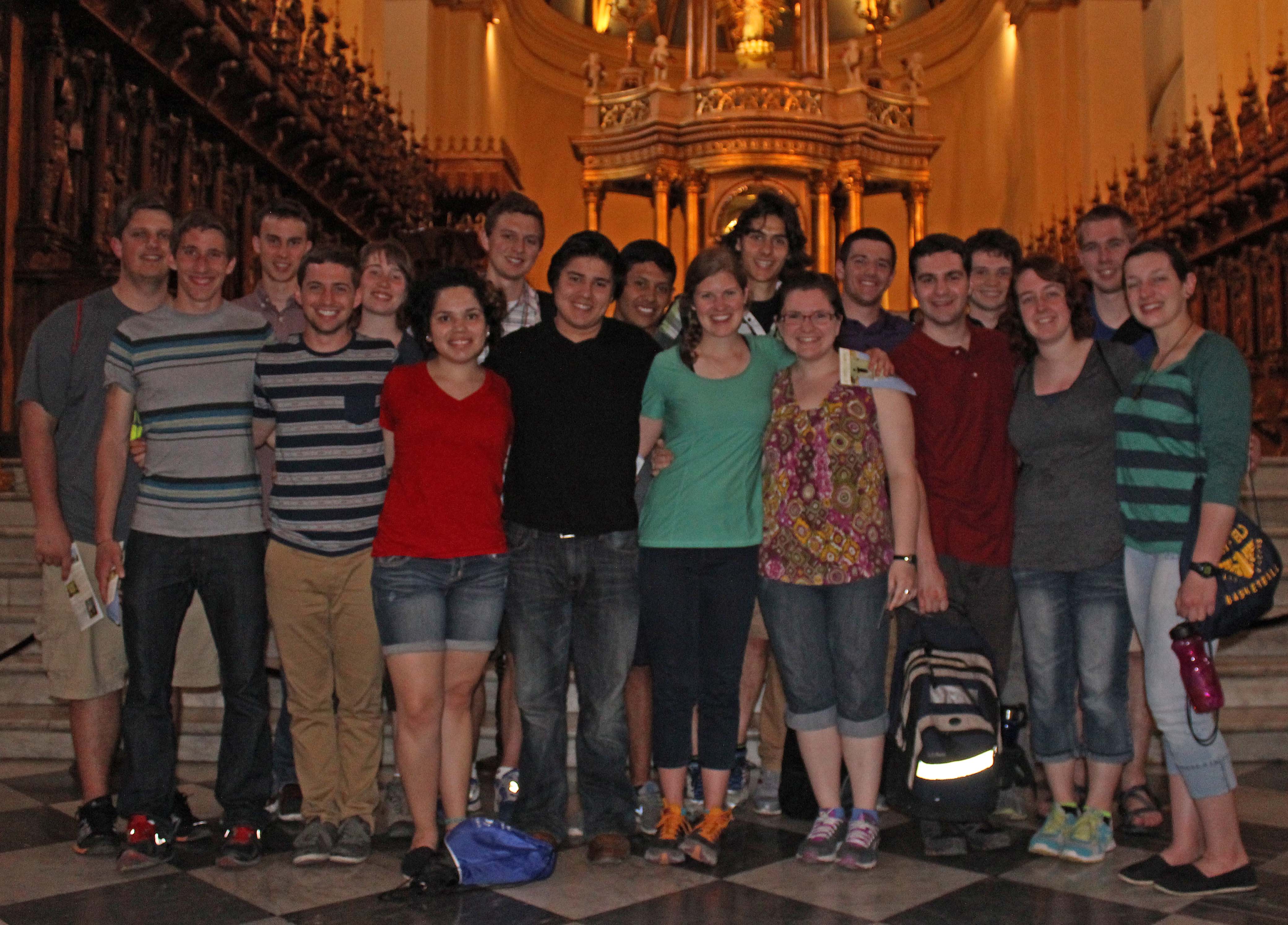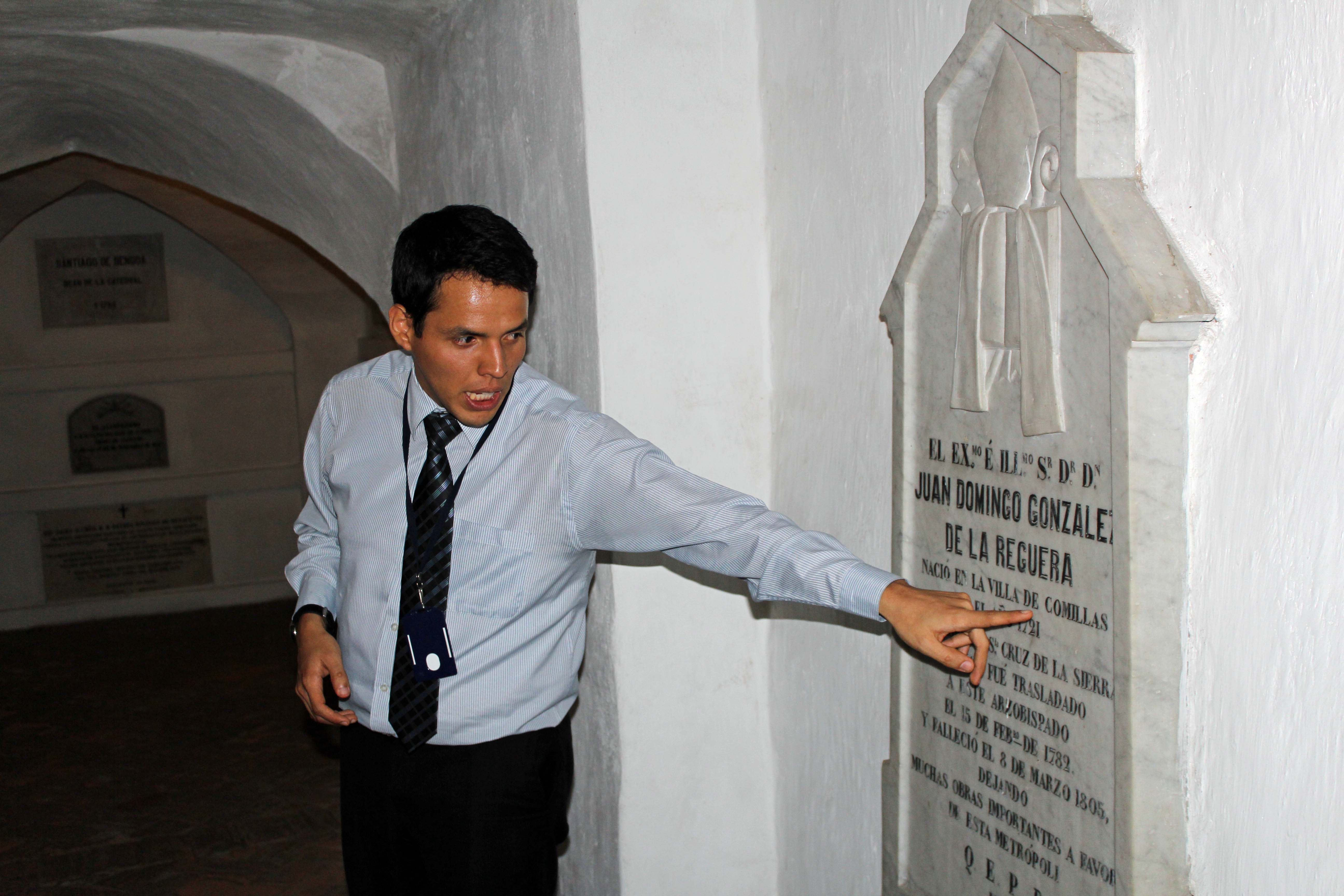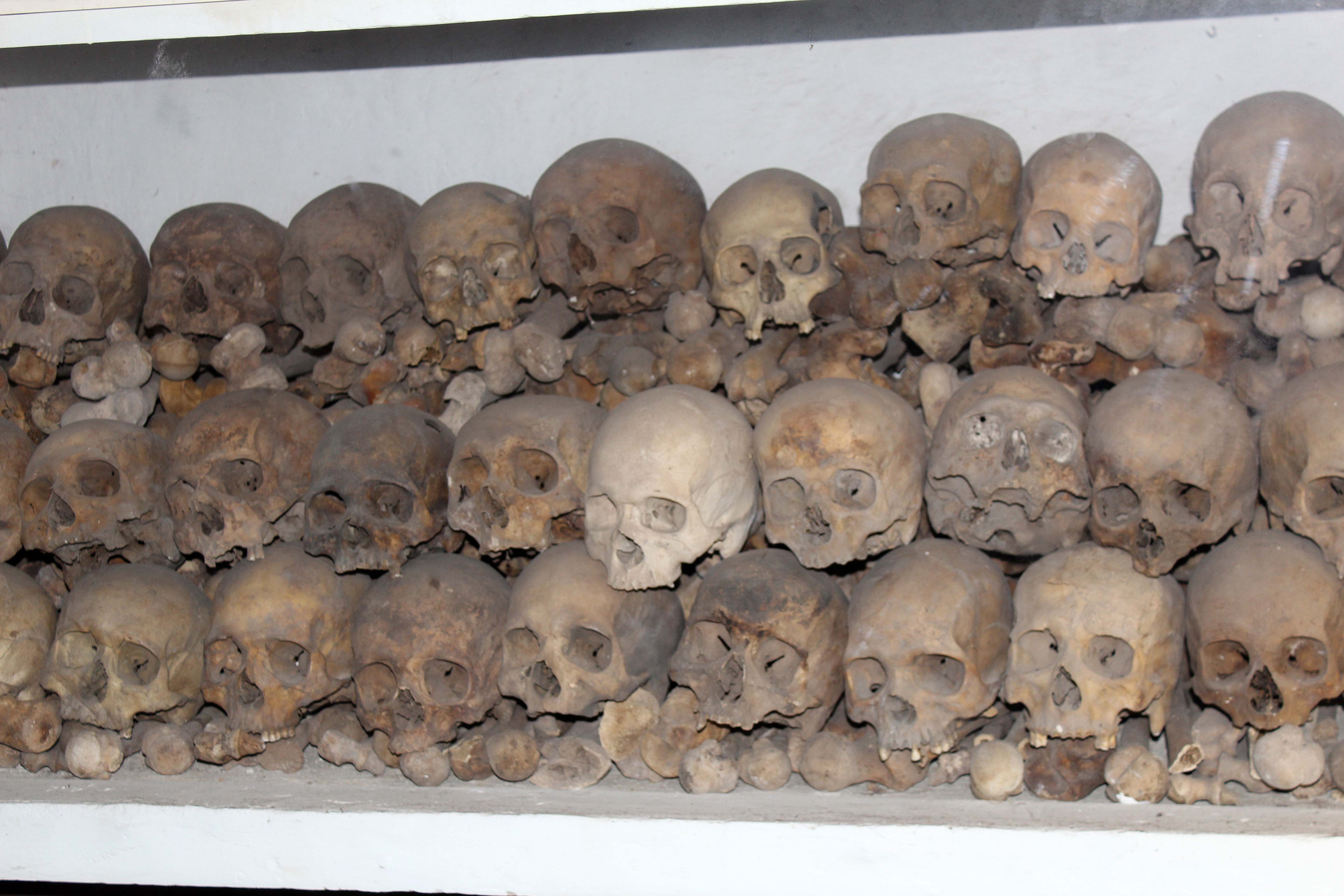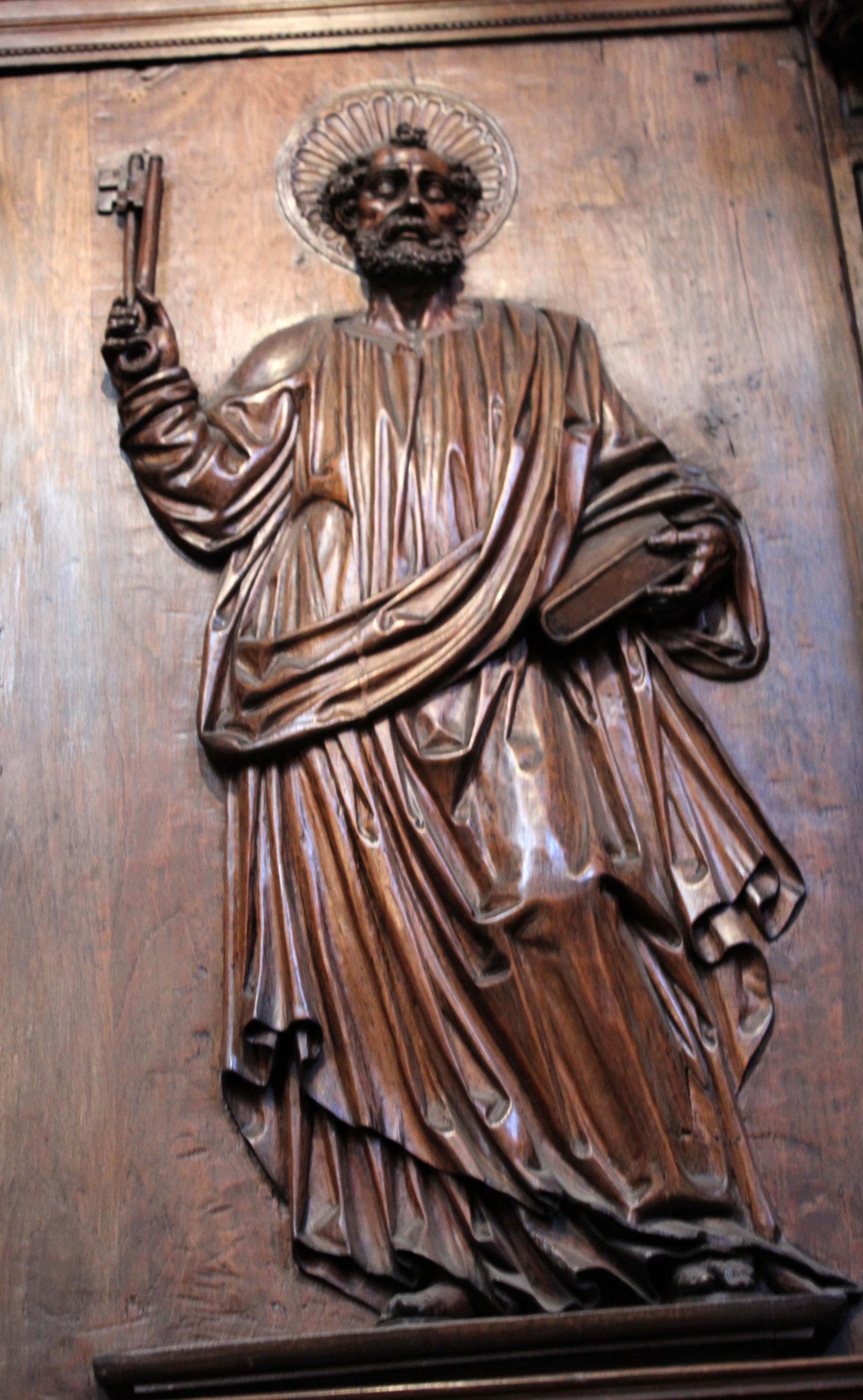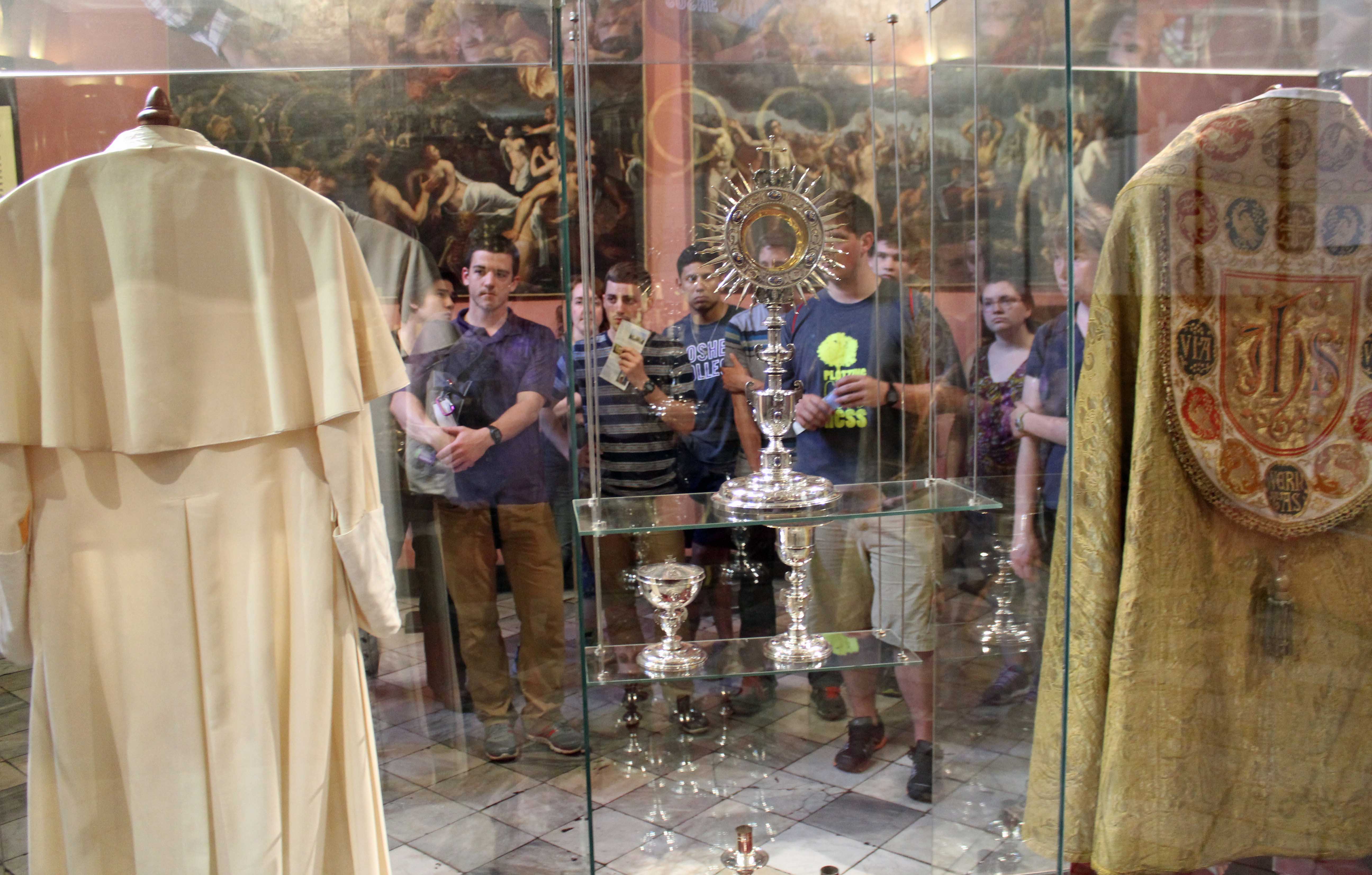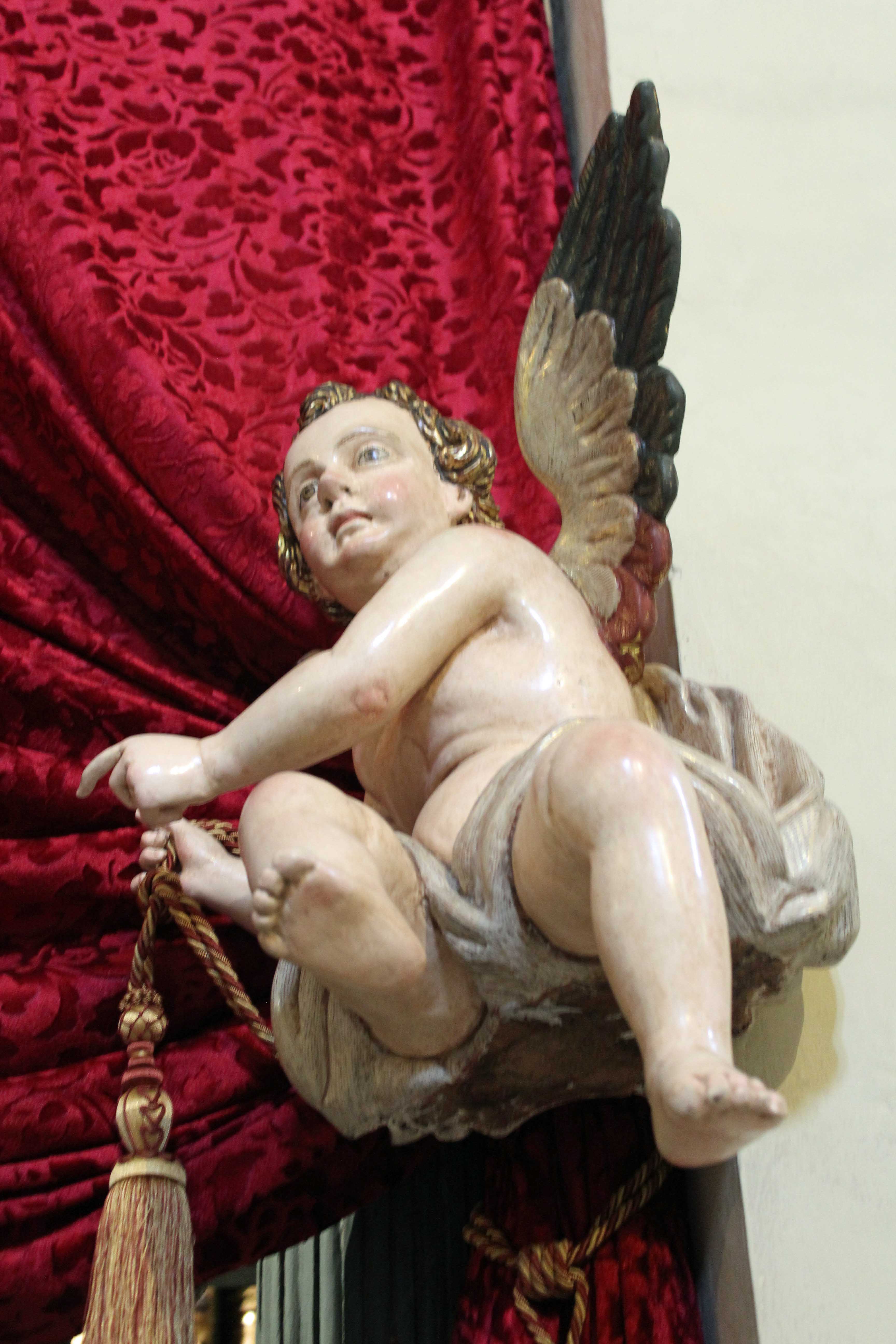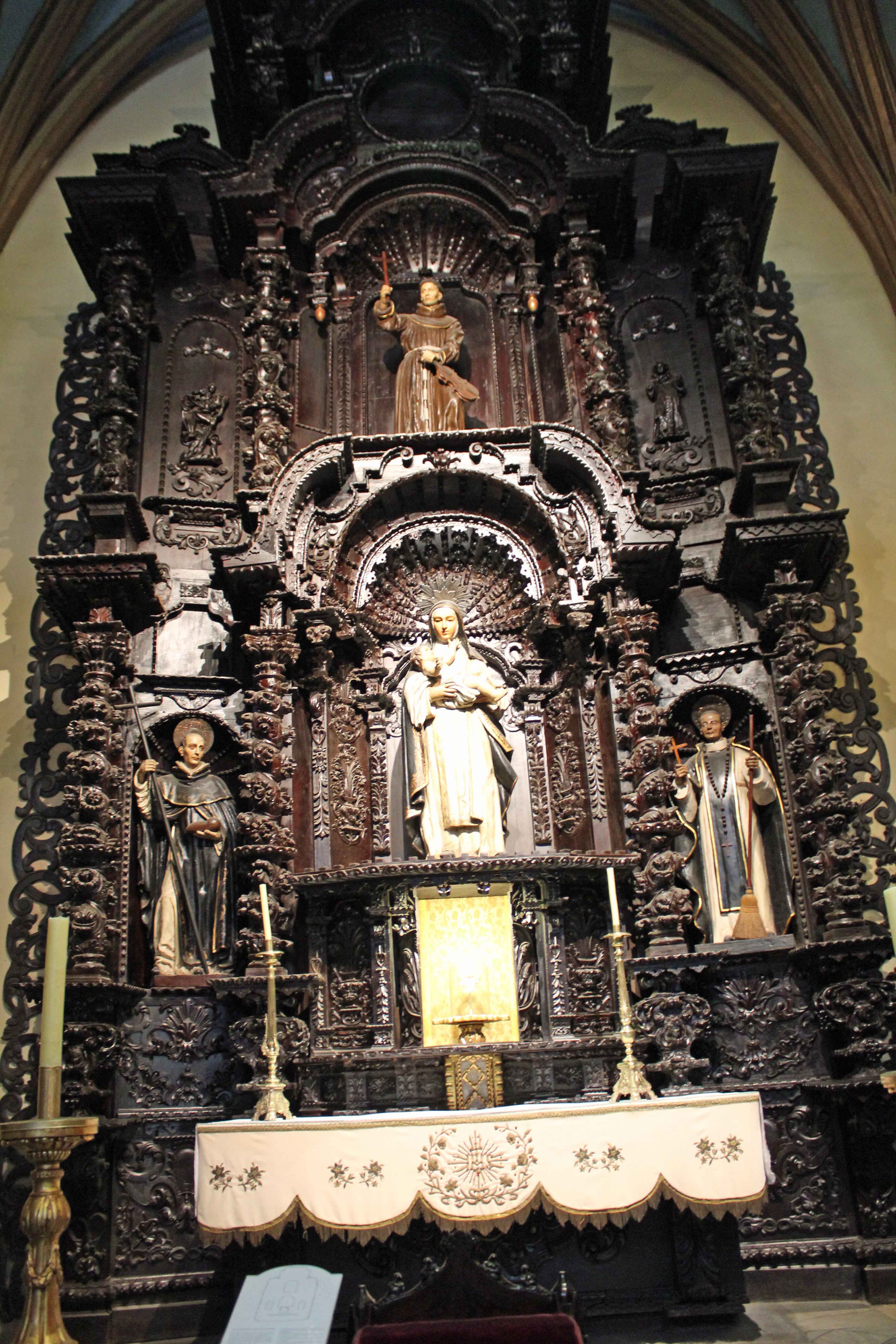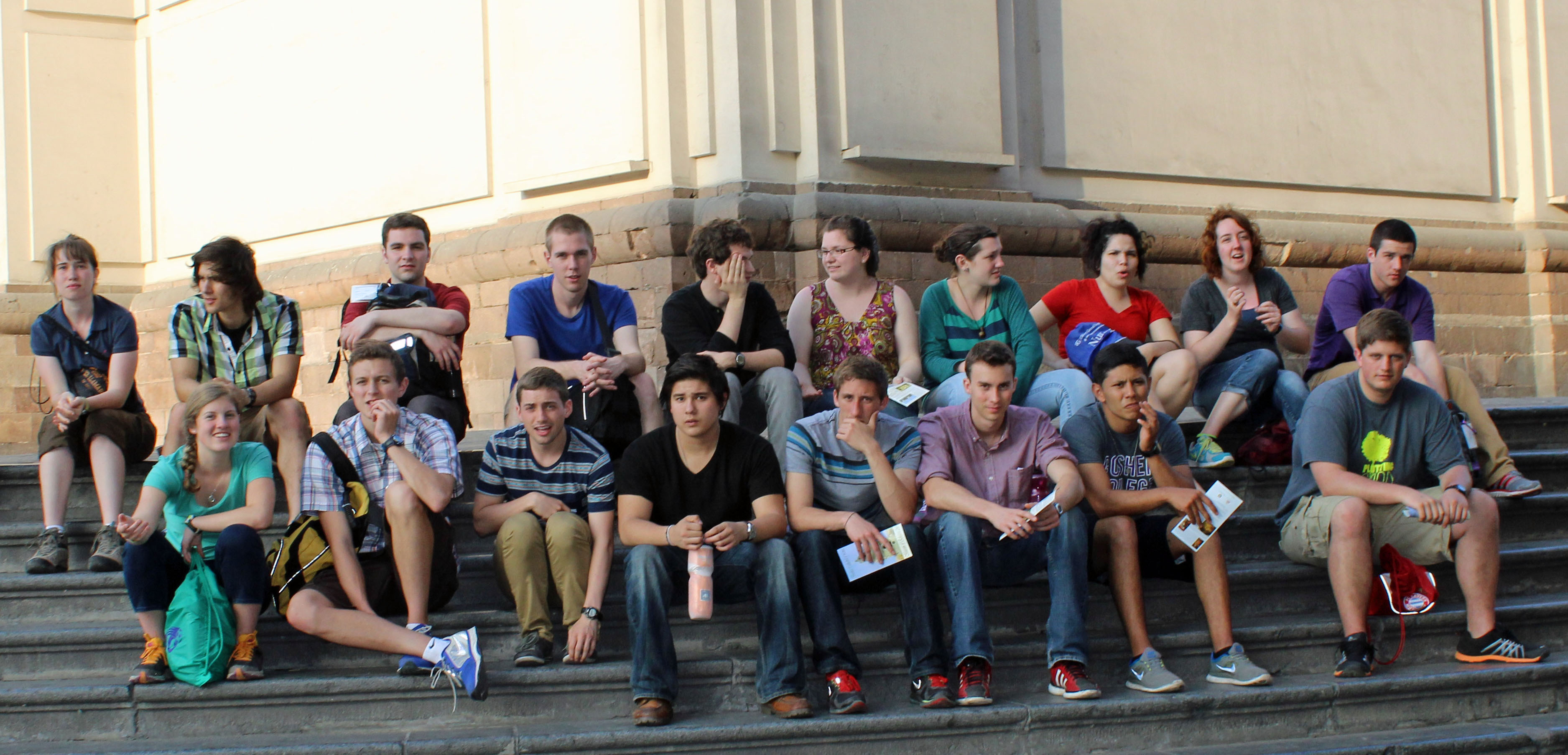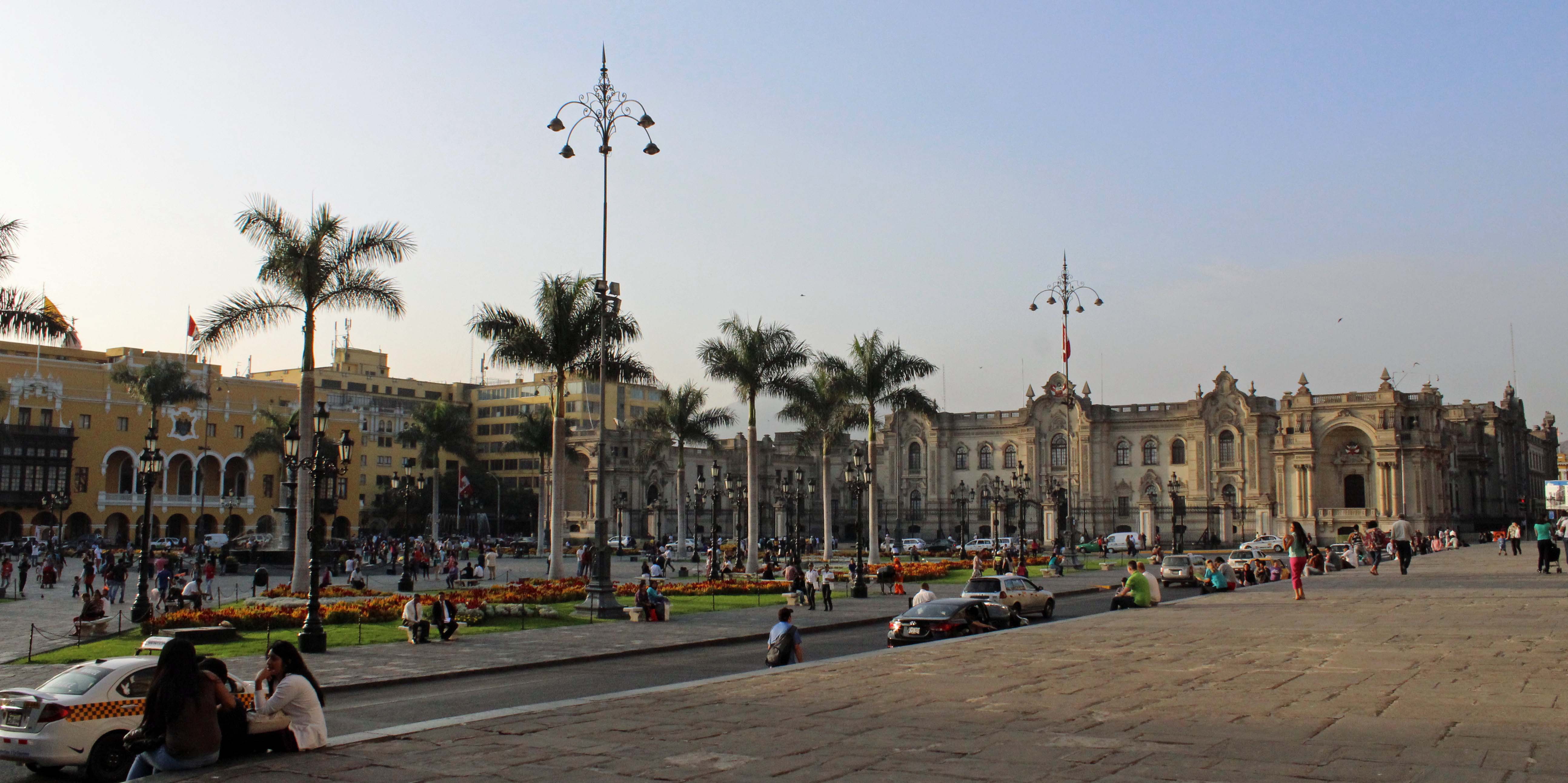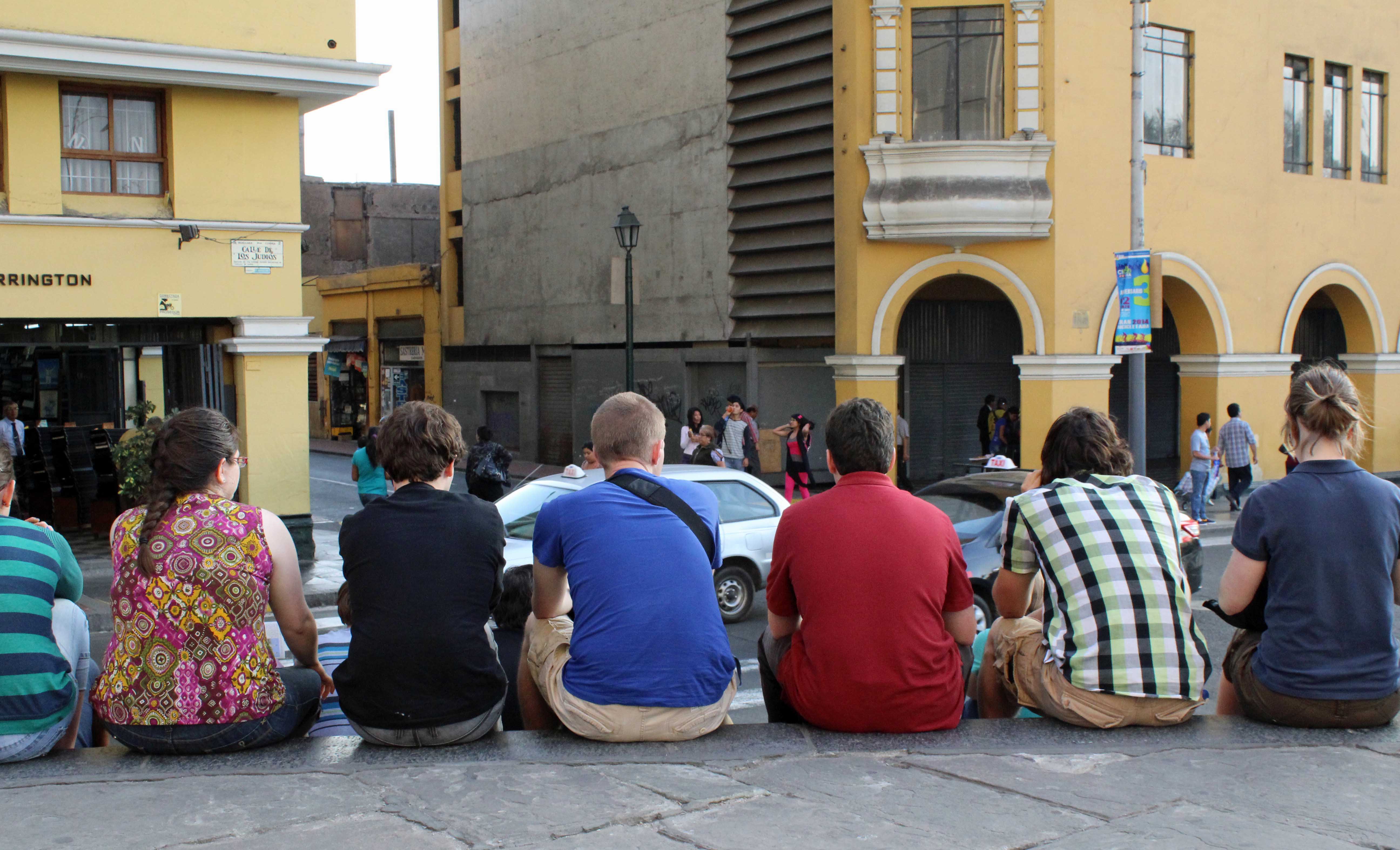A visit to Lima’s historic downtown
Goshen College students got a crash course in the history of Lima by touring the historic downtown district, better known as “El Centro de Lima.” The students got a top to bottom tour of the City of Kings – so named by its founder, the Spanish conquistador Francisco Pizarro – by touring the highest point downtown as well as underground catacombs that house the remains of thousands of Limeños. They also toured a riverfront park, watched the changing of the guard at the Presidential Palace, had lunch at a downtown landmark, visited a monastery and a cathedral and had drinks at one of the city’s historic watering holes.
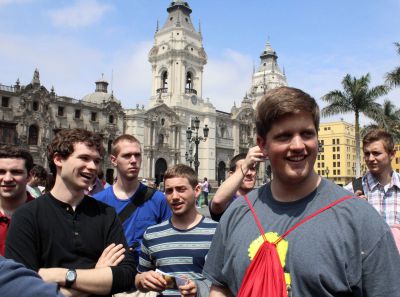
Celia Vasquez, our study coordinator and Lima native, was our guide for the day. As we left the Miraflores district on our bus, Celia showed us how the buildings changed from modern structures (some brand new or under construction, thanks to Lima’s current building boom) to older and older buildings. We knew we were in the Centro when we began seeing colonial buildings.
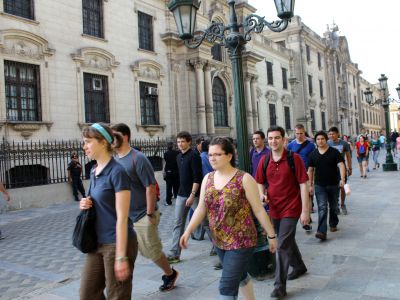
The day began with a visit to the Parque de la Muralla (Park of the Wall) beside the Rimac River. The park features an original section of the defensive wall that once surrounded the central city and was built between 1684 and 1687. The park also is the site of a statue depicting a conquistador said to be Francisco Pizarro. The 1934 statue (a gift from Mexico) used to be in Lima’s central plaza, but was moved to the less prominent park location because of widespread misgivings about Pizarro, especially his subjugation of native people.
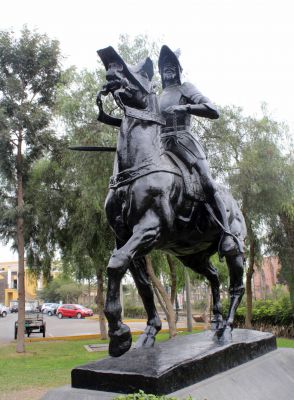
From the Parque, we walked two blocks to the 16th-century San Francisco Monastery. It is a fascinating complex, with original tiles from Seville, Spain and intricately carved mahogany ceilings. The most intriguing part of the tour is the underground catacombs, one of Lima’s original public cemeteries, where servants, slaves and poor people were buried until 1821. We saw a series of wells where bones of thousands of people were stacked according to the kind of bone – piles of femurs and skulls arranged in rings.
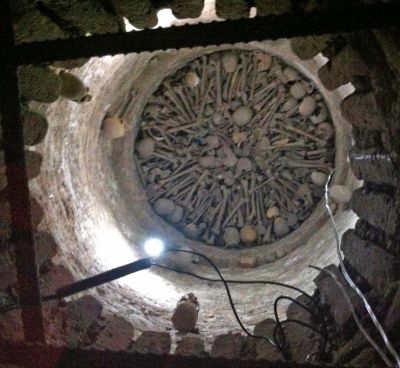
Next we threaded our way through the Centro’s busy, crowded streets to the Government Palace (or Presidential Palace) to watch the changing of the guard. The ceremony began with a brief concert by the regiment’s excellent band. Dual 24-member units slowly emerged from opposite entrances of the palace. Taking high-kicking steps, the units converged in the center and then exchanged flags, signaling that one unit had relieved the other of guard duties.
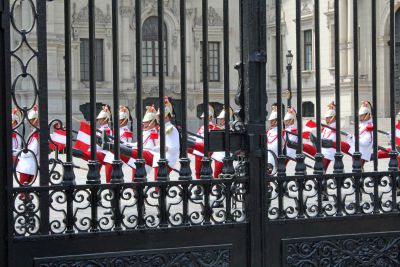
For lunch, students enjoyed a traditional Peruvian two-course almuerzo, or lunch, at La Merced, a downtown restaurant. La Merced is housed in what were once offices for the adjacent La Merced Church and features a wood-carved ceiling and walls. The students ordered their meals in Spanish and enjoyed the diverse and tasty soups, salads and main courses.
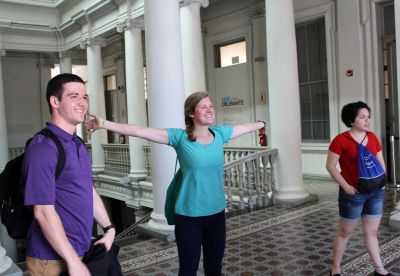
After lunch we made a stop at the historic railway station. No longer used as a station, it is now a cultural center. We admired the beautiful building before meeting our bus for a drive to the top of the Cerro San Cristóbal, the steep hill that overlooks the city. It’s a vertiginous ride up a narrow road, but worth it. The 360-degree view gave students a better sense of the vastness of this city of 9 million. The hill was worshipped in pre-Colombian times as an Apu, or divine protector. When the Spaniards seized the area, they erected a wooden cross on the summit and renamed the hill.
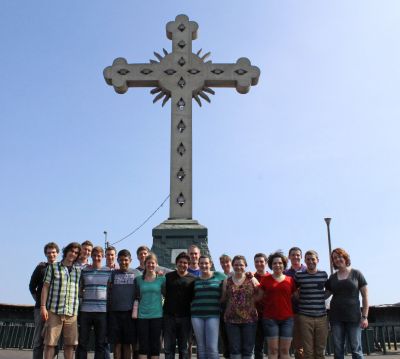
After descending back into the Centro, we were ready for a break at the Bar Cordano, a Lima landmark established in 1905. It is on a strategic corner across from the railway station and the Governmental Palace. It was once a popular watering hole for writers and other artistic citizens (we stuck with Inca Cola, limeade and chicha morada, a traditional Peruvian drink made from purple corn). Celia told us that the bar nearly closed many years ago, but the waiters got together and saved it. Many of them have continued to work their entire careers there.
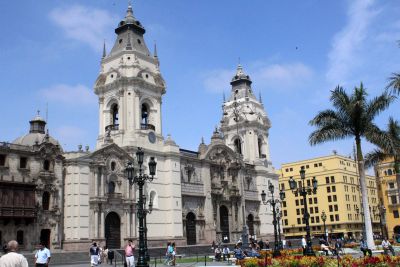
After our break we strolled through the Plaza Mayor, formerly known as the Plaza de Armas, in the heart of Lima’s historic center. It is a pretty place on a sunny day, with its yellow buildings, palm trees and central fountain. On this spot Francisco Pizarro founded Lima in 1535. Lima’s most important buildings surround the plaza – the Government Palace (home of Peru’s president), the Cathedral of Lima, the Archbishop’s Palace, and the Municipal Palace (Lima’s City Hall).

Last of all, we toured the Cathedral of Lima, which was constructed in 1758, after an earthquake destroyed the earlier structure. Francisco Pizarro’s tomb is located inside the cathedral. The bones of the conqueror of the Inca Empire were positively identified through forensic scientists in 1977. A graphic illustration shows the fatal wounds that Pizarro suffered when he was slain by Spanish rivals – wounds that aided in identification of his remains. More significantly, the cathedral has magnificent chapels and priceless collections of gold, silver and paintings. And the main altar is nothing short of spectacular.
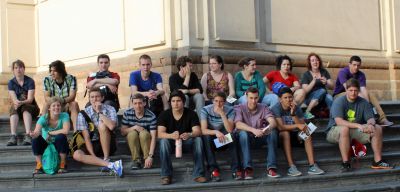
We were one of the last groups out of the Cathedral, where the great, hushed aisles and soaring vaults created a refuge of open space and quiet in the middle of the bustling downtown – a peaceful way to end the day.
– By Judy Weaver and Richard Aguirre
